#There are some differences between this quote and its French version.
Text
Book Recommendations on the French Revolution (the "short" list version)
(For some reason, the original anonymous ask and answer I thought I had saved in my drafts has disappeared? Did I accidentally delete it? Who knows with Tumblr. Anyway, good thing I screenshotted it, I guess.)

Since I am STILL working on my extremely long post series going in depth into recommendations, I guess I should really just answer this ask and give a plain and simple list, as it was requested -_- (Don't worry, the extremely long post series is still going to happen.)
First of all, let’s just say, again (and it really must be insisted on), that most Anglophone historiography is… not very good. There are exceptions, but not many. At least, not enough to satisfy me. Fortunately, some good French books have been translated to English – so that’s great news!
So here are my main recommendations:
Sophie Wahnich’s La liberté ou la mort. Essai sur la Terreur et le terrorisme (2003) which was translated to In Defence of the Terror: Liberty Or Death in the French Revolution with a foreword by Slavoj Zizek in 2012.
This essay basically changed my life, and led me to take the path I have walked since as a historian. Zizek’s foreword is very good in summarizing the ideological oppositions to the French Revolution (until he rambles the way he usually does).
It opens with a quote from Résistant poet René Char which perfectly sets the tone:
“I want never to forget how I was forced to become – for how long? – a monster of justice and intolerance, a narrow-minded simplifier, an arctic character uninterested in anyone who was not in league with him to kill the dogs of hell.”
Keep in mind that when I first read it, in 2003, the very notion of anything like the Charlottesville rally happening was still in the realm of pure fantasy.
Marie-Hélène Huet’s Mourning Glory: The Will of the French Revolution (1997). One of the rare books in my list that was originally written in English (!). I think a lot of it might be available to read via Google Books, but it’s worth buying.
This book is hard to categorize: it talks of historiography and ideology, and it’s overall a fascinating book.
It feels a lot like Sophie Wahnich’s first essay – it was also similarly influential on my research. It inspired a lot of my M.A. thesis. I’ve recently found my book version of it, and this book was annotated like I’ve rarely annotated a book. It was quite impressive.
Dominique Godineau’s Citoyennes Tricoteuses: Les femmes du peuple à Paris pendant la Révolution française (1988) which was translated to The Women of Paris and Their French Revolution (1998).
It’s the best book on women’s history during the French Revolution IMO. I really don’t have much more to say about it: it’s excellent. It talks of working class women, it talks of the conflicts between different women groups, it talks of what happened after Thermidor and the Prairial insurrections, and the women who were arrested. No book has compared to it yet.
Jean-Pierre Gross’s Fair Shares for All: Jacobin Egalitarianism in Practice (1997). You can download it for free via The Charnel House (link opens as pdf).
Another rare book that was originally written in English, and later translated to French, though the author is French! (I think some French authors have picked up that the real battlefield is in Anglophonia…) It’s very important to understand social rights, a founding legacy of the French Revolution.
François Gendron’s essential book on the Thermidorian Reaction: first published in Québec as La jeunesse dorée. Episodes de la Révolution française (1979) (The Gilded Youth. Episodes of the French Revolution). It was then published in France as La jeunesse sous Thermidor (The Youth During Thermidor). As I explained here, its publication history is quite controversial (though it seems no one noticed?). It was thankfully translated to English as The Gilded Youth of Thermidor (1993). However, the English translation follows Pierre Chaunu’s version – which didn’t alter the content per se, but removed the footnotes and has a terribly reactionary foreword – so be careful with that. If anything, that’s a very good example of all the problems in historiography and translations.
Much like Godineau’s book on women, no book can compare. In the case of women’s history during the French Revolution, it’s because most of it is abysmally terrible; in the case of the Thermidorian reaction, it’s because no one talks about it. And it’s not surprising once you start reading about it.
(You might notice that Gendron’s translated book, much like many others, are prohibitively expensive. I do own some of these so if you ever want to read any, send me a message and we’ll work it out!)
Antoine de Baecque’s The Body Politic. Corporeal Metaphor in Revolutionary France, 1770-1800 (1997), which is a translation of Le Corps de l’histoire : Métaphores et politique (1770-1800) (1993). (Here’s the table of contents.) It’s a peculiar book belonging to a peculiar field, and it can be a bit complicated/advanced in the same way most of Sophie Wahnich’s books are, but I still recommend them. See also: La gloire et l’effroi, Sept morts sous la Terreur (1997) and Les éclats du rire : la culture des rieurs aux 18e siècle (2000), but I don’t think either have been translated. Le Corps de l’histoire and La gloire et l’effroi also are nice complements to Marie-Hélène Huet’s book.
If you can read French, I really recommend the five essays reunited in Pour quoi faire la Révolution ? (2012), especially Guillaume Mazeau’s on the Terror (La Terreur, laboratoire de la modernité) – which I might try to eventually translate or at least summarize in English coz it’s really worth it.
The following books are extremely important to understand the historiographical feud and the controversies that surrounded the Bicentennial of the French Revolution in 1989 (and both have been translated to French so that’s cool too):
First, Steven L. Kaplan’s two volumes called Farewell, Revolution: Disputed Legacies (1995) and The Historians’ Feud (1996).
Then, Eric Hobsbawm’s Echoes of the Marseillaise: Two Centuries Look Back on the French Revolution (1990) which gives you the Marxist perspective on the debate. If you want to look for the non-Marxist perspective: look at literally any other book written on the French Revolution and its historiography (I’m not kidding). For example, you can read the introduction by Gwynne Lewis (1999 book edition; 2012 online edition) to Alfred Cobban’s The Social Interpretation of the French Revolution (1964), the founding “revisionist” book.
Again, if you can read French, I recommend Michel Vovelle’s Combats pour la Révolution française (1993) and 1789: L’héritage et la mémoire (2007). I have not read La bataille du Bicentenaire de la Révolution française (2017) but it might recycle parts of the previous two books, so I’d look that up first.
Marxist historiography is near inexistant in Anglophonia, because of reasons best explained in this short historiographical recap on Anglophone historiography and specifically Alfred Cobban (link opens as pdf), but there was Eric Hobsbawm, who wrote a series of very important books on “The Ages of…”:
The Age of Revolution: 1789-1848
The Age of Capital: 1848-1875
The Age of Empire: 1875-1914
The Age of Extremes: 1914-1991
Some of Albert Soboul’s works have been translated as well:
A Short History of the French Revolution, 1789-1799 (1977)
The Sans-Culottes: The Popular Movement and Revolutionary Government, 1793-1794 (1981)
Understanding the French Revolution (1988), which is a collection of various essays translated to English (here’s the table of contents)
While we’re on the subject of classics: I do need to re-read R. R. Palmer’s The Twelve Who Ruled (1941) to see if I still like it, but I believe it’s still positively received? I’ve never actually read C. L. R. James’ The Black Jacobins. Toussaint Louverture and the San Domingo Revolution (1963) but I’m going to rectify that this summer.
That’s a good way to segue into a final part.
Here is a list of books I technically have not read yet (I skimmed through them), but would still recommend because I trust the authors:
Michel Biard and Marisa Linton’s The French Revolution and Its Demons (2021) which was originally published in French as Terreur ! La Révolution française face à ses demons (2020). It looks like an excellent summary of all the controversies surrounding the Terror: Robespierre’s black legend, how the Terror was “invented”, the conflicts between different political factions and clubs, the Vendée, and stats on who actually died by the guillotine (no, there was no “noble purge”). (Here’s the table of contents.)
Peter McPhee wrote several good syntheses, the most recent being Liberty or Death: The French Revolution (2017). Others he wrote: Living the French Revolution, 1789-99 (2006) and A Social History of France, 1789-1914 (1992, reedited in 2004). Why 1914? The 19th century was defined by Hobsbawm (see above) as “the long 19th century” (by contrast with “the short 20th century”), or “the cultural and political 19th century”, which is regarded as lasting from the fall of Napoléon Bonaparte to the First World war.
Eric Hazan’s A People’s History of the French Revolution (2014) and A History of the Barricade (2015), which are translations (Une histoire de la Révolution française, 2012, and La barricade: Histoire d’un objet révolutionnaire, 2013). If you can read French, check out his essay published by La Fabrique: La dynamique de la révolte. Sur des insurrections passes et d’autres à venir (2015).
Just as a final note: this post is the equivalent of four half single-spaced pages in Times New Roman 12 pts. It also took two hours to write and format (and make the side-posts with table of contents) even though most of it is already written in several drafts – i.e. the long post series of in-depth recommendations, so that gives you an idea of why that other series of posts is taking so long to write.
I’m going to go lie down now. -_-
ETA: Corrected some typos and a link that didn't quite go to the right place.
#historiography#frev historiography#sophie wahnich#marie helène huet#antoine de baecque#michel vovelle#michel biard#marisa linton#eric hazan#peter mcphee#c. l. r. james#r. r. palmer#albert soboul#eric hobsbawm#françois gendron#francois gendron#dominique godineau#steven l. kaplan#jean pierre gross#alfred cobban#slavoj žižek#slavoj zizek#this post almost killed me
331 notes
·
View notes
Text
Unrelated things I manage to evoke in my thesis on Beauty and the Beast, modern fairy tales and self-love (titled From Folktales to Fantasy: Beauty and the Beast, Contemporary Rewritings and Self-Love), a list (caution, long post ahead):
Hayao Miyazaki's environmental tales.
In contemporary rewritings of folktales and fairy tales, these revised critical versions often follow the major issues of the time: the feminist tales of Angela Carter or Margaret Atwood of the 20th century are amongst the prime examples, but one may just as well cite Hayao Miyazaki's contemporary environmentalist and anti-war stories.
Arthurian Legends:
Nonetheless, ages change, people’s priorities change, ways of life change, and with these evolutions, heroes and stories mutate too. They evolve, but they’re never forgotten. King Arthur and Merlin are still household names, even after a millennia and a half of legends; their stories followed the times and took on new shapes to keep on meaning something to their audience.
Le Roman de Renart and "Le hérisson, le chacal et le lion" (the hedgehog, the jackal and the lion, a traditional animal tale in North Africa, Tamazight in origin):
Animal Tales are the first chapter of the ATU Index, going from ATU 1 to 299, in which the characters are talking animals usually interacting between themselves (think Roman de Renart or the tales of the hedgehog, jackal and lion in North Africa).
*On the subject of the hedgehog, the jackal and the lion, I really recommend looking up their stories. If you like cartoonish stories of the clever fox and the stupid wolf, Tom and Jerry style, you will like them.
Narnia (actually referenced a few times, the thesis does talk about Fantasy, but CS Lewis is quoted only the once):
In the dedication of The Lion, the Witch and the Wardrobe, C. S. Lewis wrote “some day you will be old enough to start reading fairy tales again”. As the reader ages and grows up, the taste for stories also evolves.
Neil Gaiman (completely out of the blue, I just wanted to quote him at least once):
the classic tale of Beauty and the Beast with all its space left to creation easily lends itself to the new scene. “Fairy tales”, Neil Gaiman writes in the introduction to Fragile Things, “are transmissible. You can catch them, or be infected by them.” They are, in their most basic form, in the bare bones of their structures, the “currency we share with those who walked the world before ever we were here.”
Doctor Who (I will find a why to quote DW in any circumstances, just watch me):
“The Universe generally fails to be a fairy tale. And that’s where we [the helpers and the leaders, heroes, doctors, teachers] come in.” That’s where writers and storytellers come in. Crafting stories is recreating a kinder, more merciful and fair world, where good wins, evil is defeated, love is everything, good deeds are rewarded and bad actions punished, justice is served and honour is upheld.
Edith Nesbit's The Story of the Amulet + more Narnia, because I will also find a way to talk about the Pevensies:
Harper spends six weeks with Rhen and Grey, and when she comes back to DC, six weeks have also passed. This is different from most Fantasy novels which actions happens in both Primary and Secondary Worlds; from Edith Nesbith’s The Story of the Amulet (1906) to Lewis’ Narnia, the passage of time in the Secondary World never matches the passage of time in the Primary World—the Pevensies spent close to two decades being kings and queens of Narnia, and yet at their return in England, not a single second had gone by, and they were back to being children again, a fact that I have always found cruel; they were adults, competent and regal, soldiers, scholars and diplomats, and then they were back to being children, powerless and ordinary.
Yet another Narnia quote - in my defence, I use Tolkien's On Fairy Stories as one of my major reference, so I had to give some room to Lewis too - + me being very French:
C.S. Lewis does write that “adventures are never fun while you're having them” (The Voyage of the Dawn Treader, Narnia book 5), but après la pluie le beau temps—storms never last forever, and the adventure always ends. That is what Fantasy tells the reader: you will go through hard times, but there will always be joy to find after the sadness.
MeToo, Greta and Malala (I swear it makes sense):
Belle just wants to be left alone with her wood-carving tools. What introvert passionate about their hobby doesn’t understand that? Lucie wants revenge on the man who hurt her; that is the whole point of the MeToo movement. Nyx wants to save her people and is ready to sacrifice herself for the cause; real life heroines fighting for their ideals are the idols of today (Greta Thunberg, Malala Yousafzai…). Harper represents the everyday life of millions of poor, disabled people, not only in the USA, but across the world. Beast wants to be loved; don’t we all?
*I actually really love that one tiny paragraph.
The "we live in a society meme" (aka the beginning of the descent into madness of the writer):
In meme terms: “we live in a society”. And that society can be crushing, draining, destroying. How then does one uphold one’s sense of self and worth when everything conspires to ruin and empty one’s heart and mind? Even though the meme is originally absurd, it quickly became a satire of the world in which we live now, where there is no place nor time to slow down, to just breathe, to take care of others, to take care of one’s self, because there is always a bill to pay, a meeting to run to, a deadline looming close, a train to catch.
Queerness (by the way if you guys know any queer retellings of B&tB please send them my way):
Depending on one’s level of ease and comfort, the co-existing inside the community requires more or less efforts and concessions to one’s authentic identity and tastes. Consider, for example, the way homosexuality and any form of queerness have been and are still viewed in many parts of the world throughout time: the main history of the queer community is to hide away an authentic, personal part of who they are in order to stay safe within a larger community that discriminate against expressions of queerness.
The "mortifying ordeal of being known" meme (sos, the writer has lost the plot):
By agreeing to play the game and follow the rules, no matter how adverse to one’s authentic nature, we tacitly agree to be seen. There is another meme, that first appeared in an essay for The New York Times in 2013: “the mortifying ordeal of being known”. The full quote goes like this: “If we want the rewards of being loved we have to submit to the mortifying ordeal of being known.” In essence, trying to hide and conceal one’s authentic self is to deprive yourself from being truly known and loved for who you are; it is to take the risk of being only superficially known and loved for who you pretend to be, the role you play, the mask you wear.
The "I can fix him" meme (what the heck is the writer talking about):
Here is a third meme, much more recent, born on Twitter in 2019: “I can fix him. I can make him better.” While the urge to help your neighbour is perfectly honourable, it can sometimes take on a sort of narcissistic veneer: it becomes no longer about the person you want to help, but about the power you can exercise over that person by turning them into the exact image of them you have, no matter if this image coincide with their authentic self or not.
Shakespeare (hell yeah, finally! Okay, it's not R&J, but still; who am I if I am not rambling about Willy):
The self is not a stable entity. It evolves, adapts to its circumstances, to the situation at the hand. “All the world's a stage and all the men and women are merely players” (As You Like It, 2. 7. 139), Shakespeare was already writing at the end of the 16th century. The deal has not changed. Everyone keeps playing a part that they believe is what society demands of them.
And finally... Kintsugi. Just for fun:
The Japanese art of kintsugi consists of repairing broken pottery with gold, letting the breaks and the defects visible, thus making them part of the history of the piece. Being broken therefore is not a sign of weakness; it becomes another sort of beauty, a sign of strength. The Beast’s curse breaks him down to his base nature, but ending the curse does not mean that the breaks disappear.
#thesis writing#master's thesis#contemporary culture#cultural studies#folklore studies#literature#beauty and the beast#fairy tales#rapha talks#rapha writes#one last part + the conclusion and i am DONE i can do it#i have run out of steam i have no inspiration left but only one day to finish this is the eleventh hour#tag yourself which unrelated insane reference are you#i'm the shakespeare quote
18 notes
·
View notes
Text
My top ten historical films
While on long-term sick leave, I’ve started a project to list all my favourite films, and it seems natural to start with some historical ones. Really good historical films are a rarity - one of the drawbacks of becoming a historian is that you are eternally cringing at historical inaccuracies.
The following, entirely my own selection, are films based on real historical events or people, with varying levels of artistic licence or authenticity, in chronological order by the period in which they are set. It is surprising how many of them are about war. I have not included films with a fictional setting in the past or literary adaptions: these will go in separate lists.
1 Andrey Rublev (1966), Andrei Tarkovsky

An examination of the artistic process, this epic film follows the life of the icon painter Rublev, capturing the world of a medieval Russia suspended between paganism and Christian mysticism. The most memorable scene is a long sequence at the end in which a very young bellmaker dedicates his whole soul and being to creating a great bell, in the knowledge that if he fails he will be executed.
2 Winstanley (1975), Kevin Brownlow
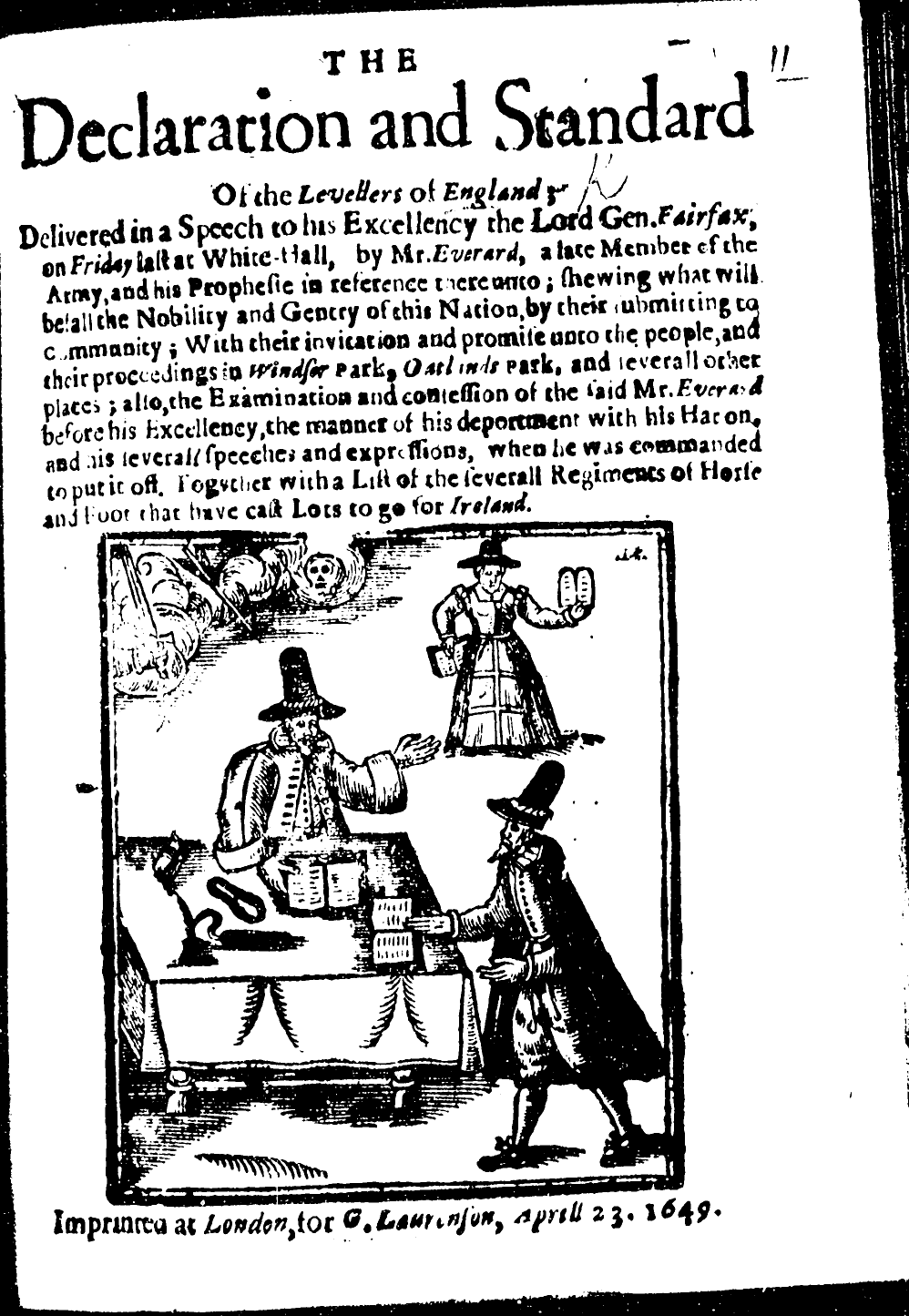
Reflecting his extensive knowledge of early silent film technique, Kevin Brownlow uses black and white film to bring to life the idealism of the Diggers, proto-communists who, following the British Civil Wars, tried to return to their vision of Eden by sharing all things in common on St George’s Hill in Surrey. Led by Gerard Winstanley (an inspiring performance by amateur actor Miles Halliwell) the reality of pitching camp in the pouring rain of the English climate is shown as somewhat more depressing than the ideal, as support from a neighbouring parson’s wife drifts away and the Diggers are soon defeated by General Fairfax and the continuing power of the propertied class. Watch for a great scene filmed under the great plastered vault of the long gallery at Chastleton House in Oxfordshire
3 Witchhammer (1970), Otakar Vávra

The Czechs have made some of the best historical films of all. This film chillingly portrays the course of the North Moravian witch trials of the 1670s under the Catholic Inquisition, showing how the terms of investigation and the climate of fear create the perfect conditions for the witch hunt to escalate until even the clergy fall under suspicion. If you want to understand the dynamics and the universal qualities of witch-hunting, watch this.
4 Napoleon (1927), Abel Gance
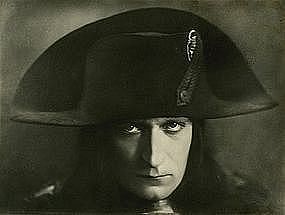
I went completely mad about this film as the apotheosis of silent film-making technique, with its close attention to the visual language of communication. Technical brilliance, great performances as both the child and the adult Napoleon, ace snow fight and an underdog story. Quotes marked ‘historical’ – ha! This is Napoleon as the French would like to remember him, young, emotive, whip-smart and whip-thin. The later Napoleon, warmonger, egotist, pudgy womaniser and cultural looter, was a completely different matter. A very long film, but that makes it all the more profound an experience. There is a bizarre parallel love story involving a female Napoleon stalker, I guess because Gance found Josephine somewhat disappointing as a love-object!
5 Waterloo (1970), Sergei Bondarchuk
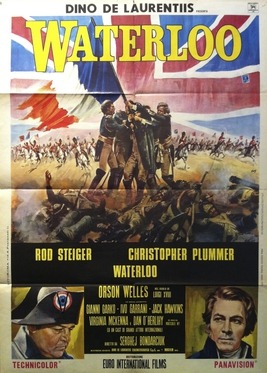
This was a failure at the time of release, but stands the test of time. See my review after watching it in 2014. Starring the incomparable (and much undervalued) Christopher Plummer as Wellington; Rod Steiger less appropriately cast as Napoleon. I’ve watched Bondarchuk’s War and Peace, which is the best version going (despite cutting out a good chunk of the story) but this is more effective because it is more focused, as the drama of the day of battle itself shapes the action.
6 Topsy Turvy (1999) Mike Leigh
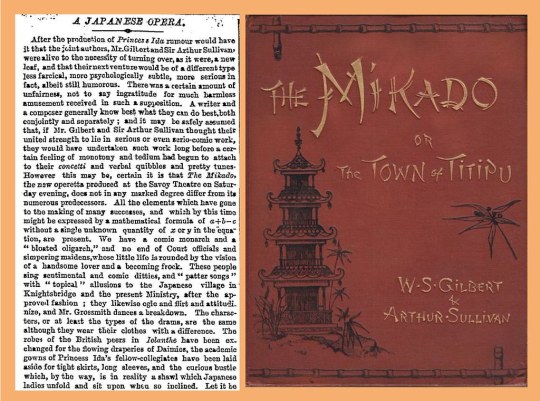
Leigh immerses us in the late-19th century world of the Savoy Opera, demonstrating the genius of Gilbert and Sullivan, but set against the pathos of their own lives and those of the actors they employ. The genius and originality of Gilbert’s setting for the Mikado is counterpoised with the seamier realities of life for Gilbert, Sullivan and the actors they employ, involving impotency, addiction and abortion. It has a magnificent cast, particularly Jim Broadbent as W.S. Gilbert and Leslie Manville as his wife Kitty. Shirley Henderson, as always, takes your breath away as the alcoholic Leonora Braham, when the drama suspends time for her dream-like rendition of ‘The Sun whose Rays’.
7 The Pianist (2002)

An unforgettable performance by Adrian Brody as the Jewish pianist Władysław Szpilman who survived the holocaust and the Warsaw uprising in hiding. At the beginning of the film he is a normal man with ordinary hopes, and we gradually see him dehumanised by Nazi persecution until at the end of the film, living like a rat underground, he is unexpectedly asked once more to play the piano, and his music signifies his humanity that has almost but not quite been destroyed.
8 Schindler’s List (1993), Steven Spielberg

My then-husband refused to go with me to see this - it seemed like a hard watch. I was drenched with emotion by the end, and wept buckets. Spielberg had such a serious purpose behind this, and employed all the artistry he had accumulated over years of more popular film-making to say something important for humanity within a particular framework. We do have choices, for good or ill, and it is important to act as witnesses.
9 Come and See (1985)
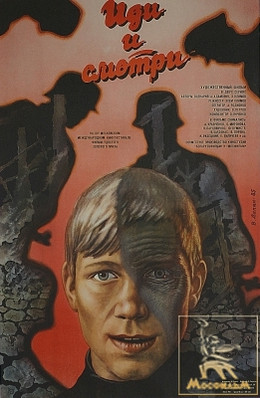
The most harrowing film I have ever seen, about the German occupation of Belarus, seen through the eyes of a young boy. An unflinching depiction of German atrocities, seen as a game by the German soldiers who laugh and joke as they burn people alive. Not for the faint-hearted.
10 The Killing Fields (1984)

Its a long time since I’ve seen this but this film about the Khymer Rouge ‘Year Zero’ in Cambodia made a huge impression on me when younger. Some have objected to the use of John Lennon’s Imagine at the end of the film, but seem to misunderstand the point - if Winstanley shows the limits of idealism, when set against the need for day to day survival and the existing power-base, this is about what happens when idealism (such as envisaged in Lennon’s song) is taken too far until it strips us entirely of our humanity.
24 notes
·
View notes
Text
Hellsing Commentary 3 Notes
This commentary is done by Taliesin Jaffe, the voice director and script adapter of Hellsing, Victoria Harwood, the voice of Integra Fairbrook Wingates Hellsing, and JB Blanc, the voice of Enrico Maxwell and the Cheddar Priest. Direct quotes may vary in accuracy, as these are written down from audio without transcripts. I also didn't write down every joke or piece of trivia because I feel like people who watch the commentaries should get to have some nice surprises for stuff that isn't covered here.
-Yuri Lowenthal, Pip's VA, apparently speaks French. Victoria also calls him "a very sexy character, you wanna sort of follow him."
-JB Blanc playfully comments that "there isn't nearly enough blood in this episode."
-At the time of recording the OVA 3 commentary, JB and Victoria have known each other for 20 years, since Victoria was twelve and JB was eighteen respectively. Steven Brand (Anderson's VA) brought Victoria to Hellsing, and she brought JB during the original run. JB Blanc and Steven Brand even lived together at that point ("but not in the biblical sense, uh, it was a very very chaste relationship"). Victoria knew Steven Brand for even longer than JB, and they were "in one of the worst plays ever, ever written" together.
-Victoria Harwood was the very last actress they auditioned for Integra's role, and until she came in they were going to settle on an actress who was competent but sounded too young. "She sounded thirteen. Just, no gravitas, no gravitas."
-When Victoria watches herself as Integra she thinks that she sounds like she's on Mogadon.
-Victoria also comments that she likes how everyone has "very different colored eyes" in this show. JB agrees and says "Mine are purple, for god's sake."
-When talking about the differences in the Cheddar priest performances, Taliesin restates that Ultimate is going for a different level of camp from the original TV series. JB agrees and says "Its almost a level of camp beyond any I have ever experienced, and believe me, I've experienced some camp."
Victoria: "Yeah but, well, that was when you were living with Steven Brand."
JB: "Pretty much, yeah yeah, there was a lot of camp going on then."
-Continuing on the differences between Ultimate and the original series, JB says of Ultimate that "You know its sexier, its more arch, its more Gothy, its more...its like everything the first one had, amped-up, and it makes it more fun."
-Taliesin states that a friend that yells at him about acting theory says "'Its very much like doing opera.' Its just, its all exercise. You're not even -you're almost not struggling for a character at any point, you're just, its just this exercise in theory." JB agrees and says "You're driven by the image much more, and therefore you're always trying to pitch up to what the images are telling you and to try and honor what the Japanese has before you."
-Victoria says that "the time thing" is what she found difficult, with the Japanese taking things a lot slower than what she's used to. "That's what I mean about the Mogadon, sometimes I'm like 'Oh my god, how much- how long can I- (JB chips in at this point with "Aaaallooow me to introoooduuuce myseeelf") how much slower and sort of -controlled, and very measured."
-When discussing Seras, Victoria comments "That's the whole manga thing, isn't it? It's all about-" JB overlaps her at this point, saying "Chests and short skirts." Victoria replies "Well- well I was gonna say 'tits and panties.'" JB says "'Chest and short skirts' is the polite version of 'tits and panties'." as they both chuckle.
-Taliesin says that at a meeting with Hirano discussing future things in Ultimate, Hirano said that he was just going to keep making Seras's chest bigger and bigger as per his own frustration levels. JB chips in and says "I think its integral to the story. As the pressure grows, so does the pressure on her shirt."
-JB says that Gildart Jackson (the Major's VA) is "absolutely superb in this, it's wonderful. It's great. It's pretty great work, the mad German."
-JB also says that Crispin has underplayed his role beautifully throughout. Taliesin admits that he doesn't write Alucard very well, since he knows Crispin will come in and work on everything with him anyway, so he sort of cheats and says "Eh, good enough." for a lot of his dialogue script.
-Victoria has two boys as of the time of recording OVA 3, and "Actually, Jonathan (the producer) rang me...about ten minutes after I had given birth, and said- and launched straight in 'We need you back!' -it was for something else- 'We need you back!' and I was like, I said 'I'm in hospital.' He said 'What are you doing in hospital?' 'Nothing,' I said, 'I've just had a baby.' and he said 'Well- well- oh god, yeah, s-stop talking to me!' You know, get off the phone. But I was back in a week later." Taliesin agrees and says he has also crawled his way out of a hospital bed several times to "crawl in here and get something done."
-JB says "If you ever want to know anything about anything, get Taliesin drunk at a convention, and it will all spill forth, like the blood of Alucard's victims."
-Taliesin says that the VA who played the Pope was a "fabulously crude man." His track was also recorded first, and JB compliments him because "I could actually, like, keep a check on my Italian accent because his was so good."
-Taliesin says that "as long as there's a controlling, awful director" as the voice of Harkonen, it would be fine.
-Taliesin initially got together "all the Brazilian accents" for the Rio teams, but then he took a minute and saw that they were "the whitest-looking Rio de Janeirian people I've ever seen" and decided to use an American SWAT team instead.
-Taliesin actually counted "everybody who dies" in the Rio scenes, and gave them a name. "So that you can actually pay attention and not have nine people die in the same scene that are all voiced by the same actor. And keep some sort of continuity as to who's talking, and where they are, so that if you have a Team Leader who's up on the roof, is not the same Team Leader that's down on the ground, who's not the same Team Leader who's in the elevator...the final bodycount was somewhere, oh, was it seventy-five people? Uh, there's seventy-five individual pieces of, of slaughter in this next, in the rest of this episode."
-Victoria laughs and comments "he likes it, ooh" when Alucard starts cackling after Integra's outburst.
-JB and Victoria both comment that they find the little exhales of anime much more difficult than the laughs. Taliesin directly tells the audience that "None of you know what I go through, there is- I have yet- I have yet to meet an English actor who can do a sound-effect, those little breaths and Japanese clicks." Victoria makes an inquisitive noise and he continues "None of them- they're all -all of you are uncomfortable doing it." Victoria argues that "-its a purely Japanese thing! I mean, what we would do is go 'Huh?' 'What?' like I mean, you know, get an American to do it."
Taliesin: "All of my American boys, they come in, they hit them first try."
JB: "Well if we're not good enough for you Tally-"
Victoria: "Yeah, we'll just fuck off."
JB: "Yeah, we'll just resign from this series, you can go screw yourself. I've never been so insulted in all my life!"
Victoria: "No! That's it, let's go."
They then both start what Victoria calls "porn grunting" as all three descend into giggles. JB says "It is porn grunting, that's why we're uncomfortable with it! We're English, sensually repressed individuals." Between breathless laughter, Taliesin calls JB "one of the most deeply unrepressed human beings I've ever met in my life."
-Taliesin and JB had drinks at a weekend once in Texas and JB got drunk enough to do his "gay cop" impression.
-The elevator scene was saved for last, and Taliesin made sure that "if you listen very carefully, there are still screams of pain and murder going all the way down that elevator shaft."
-Victoria misses the music from the original series, calling it "groovy," and Taliesin says that they've gone "kinda classical" for Ultimate. She says that she loved the original music and Taliesin agrees, saying that that was one of the most radical changes from the new series to the old.
-JB says that he really likes Alhambra's VA, even if he doesn't know who it was, and that he's great. Taliesin agrees and says "It's a weird accent, it's kind of a weird accent, its one that can go a little too camp really easily, it's the clean Spaniard? I wanted it to be kinda thin...everybody who auditioned didn't quite get the level of camp."
-JB also comments of anime that "Well, this is the danger, you see: this stuff is melodramatic, and it allows you to go certain places, but I think a lot of American actors, I mean, particularly people who do stuff on screen...they're very worried about being very internal, and this stuff just doesn't sustain that. You have to come out of your shell, you have to push it, you have to be more arch, otherwise you just don't do the format justice."
-Taliesin comments sympathetically on Alhambra's VA who had to "stretch this scream out" when Alucard breaks his leg.
-Getting the lip-flap to work in German was "fun" for Taliesin.
-The "Welcome to this crazy time" song that the Major tosses out at the end is an opening theme for Fist of the North Star. There is also a reference to Gundam slightly earlier, and according to Taliesin, Hellsing is full of similar little nods.
19 notes
·
View notes
Text
hermes crocodile bag 16
The Best Replica Hermes Birkin Purses Discount Price Is Ready For You
The rare Retourné Kelly 28 bag, made in 2015 from Nile crocodile skin with palladium hardware, is estimated to promote for between HK$600,000 and HK$800,000 (US$76,905 and US$102,540). Himalaya baggage are a sizzling auction ticket, with a matte white Nile crocodile Himalaya Birkin encrusted with 10.23-karat diamonds hitting a world auction document of £293,000 (US$383,000) in May 2017. The use of unique skins in Hermes merchandise usually are not just restricted to their baggage. Bags of Luxury even have a superb range of equipment which were carefully crafted with the finest skins on the planet. One such instance is this equally as eye-catching geranium Collier de Chien bracelet.
Hermès makes use of an agate stone to polish its crocodile and alligator skins to a shine. They don’t glaze their skins as different brands do, so your bag won’t peel or crack as easily. JaneFindsis the world's leading Hermes and luxurious bag curator, collector and luxurious market pioneer. Specializing in distinctive, unimaginable to get and classic authentic Hermes baggage and accessories. With access to the world's finest and rarest Hermes baggage and a worldwide cult following, JaneFinds is your only Investment Bag companion. Indisputable authentication and dedication to excellence.
Kim Kardashian made news in 2013 for a US$40,000 Birkin, given to her by husband Kanye West, on which the artist George Condo painted a bunch of nude figures. Another image showed Khloe Kardashian's baby nestled in US$108,000 value of the baggage, which drew some unfavorable feedback about conspicuous consumption from her adherents. Additionally, Kim's daughter was publicized whereas carrying a US$17,000 Hermes bag. According to an analyst quoted by The New York Times in 2019, there are more than one million Birkin luggage available on the market, whereas a resale boutique in Miami has sold more than US$60 million in used Birkin luggage in simply 5 years. As a results of robust demand, the Birkin bag has a high resale worth in many nations, particularly in Asia, and to such an extent that the bag is taken into account by some folks as an instrument of investment.
Another large truth to remember is that the last highest sold bag ever was $382,000 by Christie’s in November of 2017 at its Hong Kong Auction. wikipedia hermes crocodile That document holding price and a pair before it were for the ‘Regular’ Diamond Himalaya . Berk told me he believes there are about 60 ‘regular’ Diamond Himalaya Birkins on the market .
But the bag sold Wednesday evening isn't any odd Birkin. The "rare and distinctive" purse, made in 2010, is customary with 18 carat white gold and an estimated 10 carats of brilliant, colorless diamonds and crafted with Nile River-sourced crocodile, according to the auction home. The Himalaya reference in the name isn't a nod to its origin, but quite the coloring.
PETA said it takes three crocodiles to make one Birkin bag. Style icon Jane Birkin needs her name taken off crocodile-skin versions of the Hermes purses she impressed. Bags can take as a lot as two days to make by hand by French artisans and distribution is extremely controlled creating excessive demand that always outstrips supply. It’s little wonder then that the luggage are seen hanging from the arms of socialites and celebrities similar to Victoria Beckham who is alleged to personal a collection in the area of £1.5 million. The Himalaya Kelly is called the rarest purse on the planet as of 2022.
hermes crocodile bags If you’re looking for Black crocodile birkin baggage and you’re unable to seek out the right match, there are many variations in Brown, Purple and more. When purchasing for these equipment, you’ll find that there are much less obtainable items for men or unisex at present than there are for girls. One of the most particular is a “rare, shiny ombré Salvator lizard Birkin 25 with gold hardware,” from 2007, estimated to sell for between HK$180,000 and HK$240,000. The ombré lizard pores and skin is sometimes referred to as “raindrop lizard,” due to its circular sample, Tsang says.
In addition to Hermès, Roxy additionally boasts a spread of designer luggage from the likes of Chanel, Balenciaga, Saint Laurent, Dior and Fendi. Besides Hermès, Roxy additionally presents a range of designer luggage corresponding to Chanel, Balenciaga, Saint Laurent, Dior and Fendi. As to where the confusion started, well, PETA offered the news as “Jane Birkin Demands That Luxury Hermès Birkin Handbags Be Renamed” (that’s what they emailed me, in any case) and all types of shops ran with it. Tsang says the bag gets additional points for being outfitted with gold, as an alternative of palladium, hardware. The alligator scales have a tendency not to be as uniform because the crocodile scales.
Since the 1920s, the model has produced some of the most desirable leather-based items on the planet. There’s the Constance bag, a favorite of Jacqueline Kennedy, the recently relaunched 1970s-era Evelyne and, on the classic market, a slew of designs dating back to the Twenties. The alligators bought by Hermès are subjected to unspeakable atrocities on their journey to turning into a handbag. Please sign letter asking Hermes to cease promoting gadgets made from crocodile and alligator skins. Handbag lovers will have a chance to bid on Hermés luggage in dozens of colours, shapes, and vintages, including many produced from unique skins, at a Nov.
#hermes crocodile bag#hermes crocodile#hermes alligator#hermes alligator bag#hermes crocodile bags#replica hermes crocodile
0 notes
Quote
First they had to make the machines sing. Bend them around as much as possible. Not let a mechanical purr set in, but always, as if they opened up the hood to divert the connector industry, try to play with the unexpected improbabilities of an implacable mechanical creation. This way, by the time the Asimov robot theory gets under way, the robots will be very human-like.
They had to forget about faces in order to create the artwork, erase the human on the plastic coated paper, the supposed star duet, refute the easiness of celebrity to make 1001 video clips each one more suggestive than the other. Going from a young, talented, brilliant inaugural young quartet (Michael Gondry, Spike Jonze, Seb Janiak, Roman Coppola) to a previously unreleased manga from 5555 Interstellar and on to the latest darker videos, a close up on the strobe light without the pop star below it.
This way, on Asimov's day, we'll see the human underneath the robot without judging the hood.
Getting to the essential, where life is, keep on moving and rocking to savour it all the more.
Sounds + images — that's where Daft Punk is after 10 stellar years. All the singles, in no particular order, a trio of rare remixes, all the videos and always the same disconcerting energy, with its successes and experiences.
Because perfection is not a word used by robots, but a human illusion.
To relive these 10 years and calmly wait despite a not so funny world, the Dafts with human faces for the next 10 years to come. More concerts, from Europe to the United States passing through Asia, as a kick off to the summer 2006 and to make the machines sing.
One More Time.
Daft Punk, liner notes from “Musique Vol. I 1993-2005″ combination CD/DVD album. (French Version here.)
#long post#Daft Punk#Daft Punk Quotes#Quotes#Robots#Music#Musique Volume I#Isaac Asimov#I copied the words exactly as they're written on the album: punctuation capitalization and line spacing.#There are some differences between this quote and its French version.
12 notes
·
View notes
Text
The Moon is Very Beautiful Tonight - The Love Language of the Tower of Doors

Natsume Soseki (1867 - 1916) was a Meiji era novelist and is widely regarded as one of, if not the most important and influential novelist in modern Japanese history. So prominent is Natsume’s place in Japanese history and culture that Natsume’s portrait was featured on the 1000 yen note for twenty years, from 1984 to 2004.
Prior to becoming a writer, Natsume was a teacher, first at Matsuyama MIddle School, which would serve as inspiration for one of his most famous novels, 坊っちゃん (Botchan), and then Fifth High School in Kumamoto.
In 1900, he was sent by the Japanese Government to study English literature in Great Britain. By all accounts, he did not enjoy his time studying abroad. Of his time spent at University Collect London, Natsume wrote; “The two years I spent in London were the most unpleasant years in my life. Among English gentlemen I lived in misery, like a poor dog that had strayed among a pack of wolves.”
However much he may have disdained it, his time in Britain was hugely influential to Natsume and his works. It engendered in him a great deal of skepticism towards the rapid Westernization of Japan. The tensions between modern Western culture and traditional Japanese sensibilities would become a recurring theme in his writings.
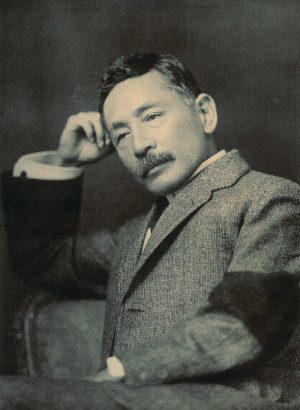
Natsume Soseki (1867 - 1916)
After returning to Japan in 1903 but before resigning to become a full time writer in 1907, Natsume was a professor of English literature at Tokyo Imperial University. While teaching one day, Natsume overheard some of his students struggling to translate the phrase “I love you” from English into Japanese. The students settled on 我君を愛す (I love you), but Natsume took issue with the use of 愛す (aisu - love), as he felt that stating one’s feelings that openly and directly was too Western and wasn’t in keeping with Japanese culture, or what he thought Japanese culture should be.
Instead, he suggested that “I love you” should be translated as 月が綺麗ですね (the moon is beautiful, isn’t it?). He felt that this phrase preserved the indirect, stoic nature of Japanese, as the the word for “moon” (月 - tsuki) and “like” (好き - suki) both sound the same when spoken out loud. This creates a double meaning for the phrase, stating one’s affection by hiding it in plain sight.
Or so the story goes. Records corroborating this tale are sparse, with some of them popping up one hundred years or more after Natsume’s death. The exact phrasing of the translation also changes depending on the telling, with some versions saying that Natsume translated “I love you” to 今夜は月がとても青い (The moon is very blue tonight).
Regardless of the veracity, the story of Natsume’s translation became part of the cultural consciousness of Japan. In 1955, enka singer Tsuzuko Sugawara released the song 月がとっても青いから (“Since the Moon is so Blue”) and 2017 saw the release of the romance anime 月がきれい (As the Moon, So Beautiful).
“If French is the language of love, then Japanese is the language of awkward, and roundabout expressions like this one are common throughout.” Translator and editor Rei Miyasaka told me in a brief correspondence we had on the subject. Among other things, Miyasaka worked as a translator on the aforementioned As the Moon, So Beautiful anime series. “The story of Natsume’s translation, whether factual or not, is passed down essentially as a useful parable. It demonstrates a difference between Western and Japanese mannerisms.”
The Tower of Doors gamble is the apotheosis of Sayaka’s character arc and the arc of her and Kirari’s relationship. It comes when both are at their most uncertain about the other and the relationship they have, and the moon plays a pivotal role in the outcome of the gamble.
Despite moving though the tower in a way that she thought was perfect, Sayaka still loses the gamble. When Yumeko begins to explain to a shellshocked Sayaka how she managed to beat her, she says this:

今夜は月がとっても綺麗ですね。
The moon is very beautiful tonight, isn't it?
“The phrase is definitely well-known in Japan. “ Miyasaka says. “...when this particular phrase is referenced in literature or pop culture, it’s usually with either a tacit or explicit nod to the Natsume Soseki story, usually in a discussion of Japanese people’s awkwardness and/or aesthetic sensibilities.”
Yumeko doesn’t quite say the famous line exactly here. She adds とっても (very) and 今夜 (tonight) to it. I believe this was an intentional deviation, for two reasons. One, this is not Yumeko’s confession, she is instead calling attention to the Tower of Doors and Kirari’s intentions. And two, changing the line draws attention to what remains the same. The kanji used to describe the moon, 綺麗 (beautiful), shares the same first character as is used in Kirari’s name (綺羅莉), drawing a connection to Kirari and the moon.
Later in her explanation, Yumeko drops any pretense of subtlety, saying:

このギャンブルのためだけに「扉の塔」は回転する!
The "Tower of Doors" rotates just for this gamble!)
なんて馬鹿らしくて。
How silly/absurd/ridiculous!
なんて愛らしくて。
How charming/adorable/lovely!
なんてロマンテックなんでしょう!
How romantic!
The precise word Yumeko uses to describe the romanticism of the Tower of Doors is ロマンテック, which is the katakana for the english word “romantic.” Katakana is a sort of phonetic way of writing in Japanese that’s used in several different ways, including foreign loan words and emphasis, similar to italics in English. Yumeko is stressing heavily and unambiguously the romantic nature of the Tower of Doors.
When a furious and dumbstruck Sayaka retorts that Yumeko’s logic makes no sense and that the Kirari may have made the Tower rotate for no reason, both Yumeko and Kirari rebuff her:

Yumeko:
まさか
No way!
そんなこと考えもしませんでしたよ。ここまで大掛かりな仕掛けを作っておいてギャンブルに使わないなんて。
I didn't even think about that. You can't make such a large-scale device/mechanism/gadget and not use it for gambling.
Kirari:
買い被りよ、清華。私もそこまで酔狂ではないわ。
You give me too much credit. I'm not that capricious/eccentric.
Here, Yumeko asserts, and Kirari confirms, the intentionality of the design behind the Tower of Doors. Kirari designed the Tower with the intent that the moon would reveal its secret.
Yumeko won the Tower of Doors because she figured out the Tower’s secret. But that secret wasn’t that it rotated and that you could move from the bottom to top floor in one move. The key to the Tower was understanding Kirari’s intent when she designed it. That the Tower of Doors is a love letter to Sayaka, designed to capitalize on all of her strength in logic and reasoning, but with it’s own illogical twist layered on to.
Sayaka failed to understand this for the same reason everyone loses to Yumeko; they become so absorbed in beating Yumeko and losing themselves in the gamble that they lose sight of the bigger picture. Sayaka was so focused on Yumeko that she failed to see the key to understanding the Tower and the symbol of Kirari’s affection for her; the moon. But it doesn’t matter in the end. Even though Sayaka lost the gamble, Kirari and Sayaka accept one another, and are brought closer, because, as Yumeko puts it, “You can’t prohibit someone from having feelings for someone else.”
“...Japanese people love to euphemize and beat around the bush.” Miyasaka says. “...people tend not to like saying ‘I love you’ because people find it to be too forward...So quotes like this one [the moon is beautiful, isn’t it?] might come up naturally when two people are sharing a moment...one should go no further than to express that, despite the stoicism expected of them by the other people around them, they feel safe exposing their sentimentality to this person, and that hence they love them.”
Translation is more of an art than a science. There’s no equation that you can plug words and phrases into and have them converted cleanly into any other language because words are more than dictionary definitions.
To translate something from one language to another while still preserving meaning requires a firm grasp not only of the mechanics of both languages, but also the cultural vocabularies of the languages as well. But even then, meaning can still be lost because the cultural contexts and codes that inform language exist outside of the words.
The language of love that permeates the Tower of Doors is something that sadly gets, not just lost, but abandoned in translation from Japanese to English, and ends up going unnoticed, like Sayaka and the moon.
CLICK HERE FOR A TANGENT ABOUT KAKEGURUI’S OFFICIAL ENGLISH TRANSLATIONS
Massive, massive shoutout to @castleoflions for doing just as much, if not more work than I did on this in providing me with the manga pages as well as helping me with the Japanese. Also, thank you so much to Rei Miyasaka for offering me some of his time and helping me with the cultural aspects of this piece.
#kakegurui#kakegurui xx#momobami kirari#kirari momobami#Igarashi Sayaka#sayaka igarashi#kirasaya#translation#natsume soseki
613 notes
·
View notes
Photo
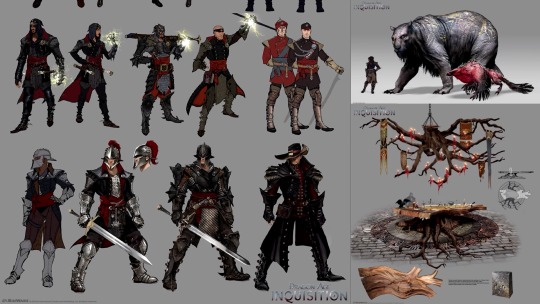
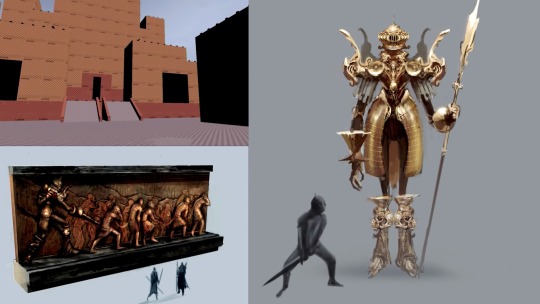
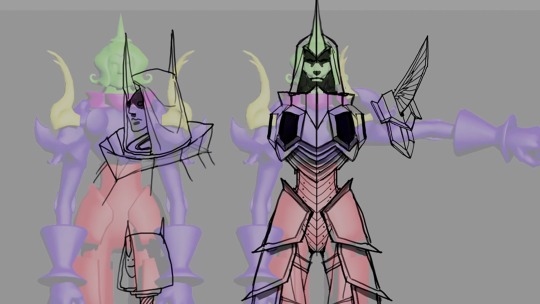
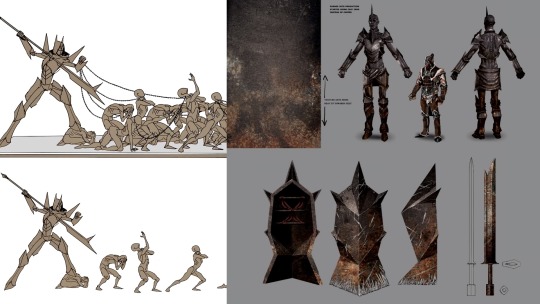


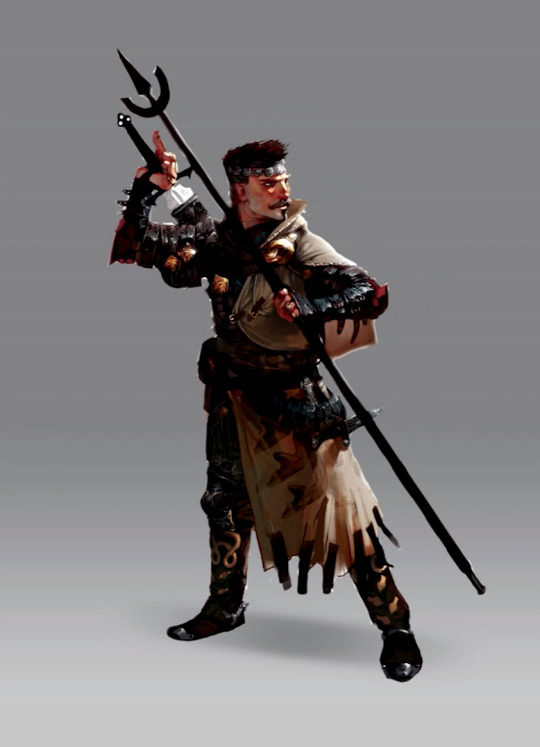


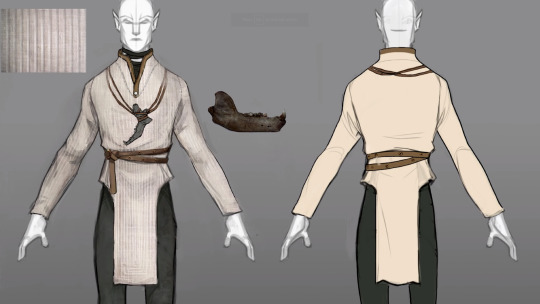
Dragon Age II and Dragon Age: Inquisition concept art & assets from a 2016 talk/presentation by Matt Rhodes, titled “The World of Concept Art” [watch link & source]
It’s an interesting and insightful talk which I recommend watching, especially if you have an interest in concept art and related things like character design and how it fits into the overall game dev process. It’s also interesting to see a bit about how the DA team’s art direction/process has changed over time between games, and hear a bit about how they’ve been doing things going forwards for the next game.
This is Part 1. [Link to Part 2]
(Some notes on the commentary given on the images and in general in the presentation under the cut due to length.)
On image 2: DAII had a fast, hot production period where decisions were made very quickly. The devs knew that the central hub, Kirkwall, had been a center of an old slavery-based empire in the past, and wanted to have indications of this [in its art direction]. There were going to be giant statues that the PC eventually fought - on the right is the design for the statues as they originally were. In the top left, this is all they had for the location [owing to the intensive prod period]. They also had a general idea that they wanted to have tableaus that came to life, shown in the bottom left.
On image 3: Going back to the design of the giant statues, the beautiful golden clockwork version of the design doesn’t really say ‘tool of an ancient slavery-based empire’, so they took the model and tried to come up with something that had more of the kinds of shapes that get into the back of your head and say things like ‘aggressive, hard, simple’.
On image 4: So here they had started doing concepts trying to find some of the right poses, accessories etc that these things would have. One of the hearts of the internal ‘DA art [direction] codex’ is “gray and pointy”; if they give a concept like this to [then] Art Director Matthew Goldman he instinctively wants to go “Yes! Approve!”, and so has to kind of reign himself in a little bit.
On image 5: This is where they ended up getting to and how the concept art turned out in terms of the model, with some negotiation back and forth. This is an example of how their art direction process now tries to tell a story with the art (i.e. it tries to support the story through art aspects of the setting and the environment). Historically, they would have just thrown the French-looking, Baroque clockwork version of the statue into the game and gone with it. They are getting more and more intentional with this sort of thing.
On this image: This was an internal image made for internal discussion. The characters in it aren’t ones that exist or that became other characters, with the exception of the Warden, who kind of became Blackwall. In this image, they were trying to think about visual separation among members of a group at the most basic level (simple graphic design principles, like different shapes and colors). This image is part of trying to solve the design problem of having 4 different characters on-screen in the party at once in their games - as in, players of course need to be able to easily tell who is doing what and where.
A general comment: At BioWare, the concept artists nowadays involve themselves in the character design process much earlier than they used to. Historically, as in earlier games, the writers would write up a bunch of characters and then concept artists would be brought in to draw them. Through negotiation and back-and-forth they would then come up with something. Nowadays though, the concept artists are involved from Day 1. The writers now write down 2 words to describe a character and the artists do sketches based on that. The writers then will write a sentence and the artists will do more drawings based on that. Then it progresses to a paragraph and drawings based on that and so on. In this way it goes back and forth and they build it up so that the visual aspects and the writeup/content of the character are developed completely in tandem, complimentary to one another. This is their goal. They aren’t quite there yet, but this is what they’re trying to strive for in this area.
On image 6: These are Dorian concepts. His initial 2-word writeup was “rockstar mage”. They had different artists take different swings at him. The middle concept is Matt’s. The third concept is by Casper Konefal. Everyone was very excited about it and so it was then taken up to a more final stage (image 7).
On image 8: Casper is one of Matt’s favorite concept artists because he goes in and lovingly details absolutely everything - all the pieces of jewelry etc. Each ring has a story. This attention and level of detail and thought behind it adds authenticity and verisimilitude.
On image 9: In game development, there is an effect on character design that can happen during review meetings. The concept/character artist will know what they need visually from a particular character’s design in order to visually tell the story and to help the character support that. Oftentimes, people who aren’t artists don’t have the language to describe this or realize that’s what’s going on in a character’s design, and instead they just see imperfections in the presented faces. What this can lead to is that unintentionally a group review meeting can slowly trim away all the features of a character that make them interesting or distinct. This is why, for many characters across the game industry, if they were shaved and had their facial decorations etc removed, it would be kind of hard to tell many of them apart, as they have all been subjected to this sort of “council sandblasting” process. Casper figured out an idea to help with this; annotating concept drawings with artistic knowledge that artists know intuitively, as has been done here. Artists know, for instance, that certain shapes and angles can allow for certain assumptions about the character to be made (for example, think about Cassandra’s personality and then consider the angular, straight strong lines that make up her face). Annotating like this and then presenting both versions alongside one another helps these aspects of character design be recognized in the review process, and helps characters remain more distinct.
On image 10: They knew that in DAI there was going to be a character who would be with the PC for the whole game - the humble little hermit, non-intrusive, someone quite closed off who the player wouldn’t know much about. “[quote] And at the very end of the game you’d basically find out that he’s Loki himself, or the embodiment of this ancient god that had been tricking you and basically manipulating you the whole time, characterized by a wolf.” And so Nick Thornborrow hung a wolf’s jaw bone off his neck and it was just there in plain sight the whole game. Because this detail was in the drawings at an early stage, it sparked conversations with the audio department, and the audio department could add touches from their end like having wolves howling when he walked into a new area. They could then get all of these different elements and things that could be hinted at, so that when you play the game a second time it’s like ‘They weren’t even hiding it!! It was there the whole time!!’ He loves that.
A general comment: Any one of BioWare’s 3D modelled characters standing in-game talking or animating probably ends up costing them something in the 40,000 - 60,000 dollar range (they calculated this).
A general comment: For DAI, the concept artists also started to get heavily involved in the storytelling side of things at a deeper level, doing things like quick’n’dirty storyboards for the cinematic designers and spending more time with the writers talking about what emotions they were trying to convey at different points and so forth. Since starting doing this, this has become a built-in part of their process.
A comment in the context of giving advice to up-and-coming and student artists, on the subject of how concepts and ideas are naturally thrown out during the process of iterating on ideas etc: “[quote] Right now, the project that I’m working on that I can’t talk about, I have 3 versions of the story in the garbage, and it’s awesome. Because now I’m working on the fourth with our lead writer and it’s so much better than it would have been otherwise and we’re doing it so much earlier so that we can actually change things up.” Said project could be DA4 or something else. (Please remember these comments were made in November 2016. MEA came out in 2017 and DA4 has been rebooted)
[source]
#dragon age 4#the dread wolf rises#dragon age#bioware#solas#cole#cassandra pentaghast#slavery cw#spirit boy#my lady paladin#long post#longpost#da4 tag for the insight into post-DAI era art direction/design process#& for the reference to the project which may or may not be da4#highlights compiled in case the talk as-is isn't accessible to someone
217 notes
·
View notes
Text
Other Code Lyoko media and resources
It’s really great to see people getting into Code Lyoko again now that it’s on Netflix. I decided to make this post with some brief information about some of the other media/sequels people might not know about, plus a few resources I find particularly useful and will answer some of the most common questions people tend to have about the series.
Disclaimer: yes I’m the translator for the site I’m linking to, but I loved this site and its huge variety of resources years before I joined. The site design may be outdated, but its content is still quality.
Other media/sequel series
Comics
https://en.codelyoko.fr/bd.cl
There was an official French magazine that ran for 3 issues. Each one included 30 pages of comics that take place during the series, which you can find translated scans of here. The illustrator recently gave us the digital versions of these pages and the scans will eventually be replaced with those, but I’m not sure when that will be. The stories are short but sweet and the art is nice, so I think they’re definitely worth a look. You can also find complete scans of the magazines but they haven’t been translated into English.
Code Lyoko Chronicles (novel sequel series)
https://en.codelyoko.fr/chronicles
A four-book AU series that took place after the series finale. It attempts to explain some of the open-ended questions such as Carthage, Hopper’s backstory and how Lyoko really works, all within a more realistic and detailed setting. If you’re curious about all that stuff and interested in a somewhat darker take on Code Lyoko, I think it’s worth a look. (I call it an AU because they recount the events of the series and change them up a bit to suit the new setting, but in essence it’s the same story, just condensed into a smaller timeframe and with added detail.) It was never published in English but you can find a fan translation here in PDF and ePub format.
Code Lyoko Evolution (live action sequel series)
https://www.youtube.com/c/CODELYOKOENGLISHOFFICIAL/videos
A 26-episode sequel series that replaced the 2D animated segments with live action. It was filmed in French and dubbed in various languages not including English (they were planning to dub it in English but fans weren’t interested, so). It’s available on the official YouTube channel with adequate English subtitles. It takes place sometime after the original series and also goes into a little bit of Hopper’s backstory. It’s completely unrelated to the Chronicles.
Resources
Episode guide
http://www.codelyoko-leguide.fr/en
A guide with plot summaries, quotes, images and anecdotes/trivia on each episode. If you use the drop-down option you can also find guides to the series pilot Garage Kids and the comics. (Note: this was my first translation project so the English is kinda bad in places. For more accurate episode quotes, see the scripts/transcripts below.)
Image galleries
https://en.codelyoko.fr/accueil_galeries.cl
High quality screenshots from every episode. You can filter by episode, character or setting.
Renders
https://en.codelyoko.fr/renders.cl
A collection of official artwork (renders) with transparent backgrounds in the best available quality. Useful for graphic art.
Episode scripts (French) and transcripts (English)
https://en.codelyoko.fr/conceptuels.cl
The official French scripts for every episode of the cartoon and Evolution except 91, and fan-made English transcripts for the cartoon. Both of these have text descriptions of the action as well as the dialogue. As of writing this, the English transcripts for Evolution have been completed but aren’t uploaded yet.
This page also has various other production documents like the graphic bible, character sheets, concept art and storyboards.
Analysis
LyokoStats
https://en.codelyoko.fr/lyokostats/lyokostats.cl
The site goes through every episode and uses a points system to analyse each character’s performance on Lyoko. Last I checked the individual episode breakdown was kinda broken, but you can still find the results summary ranking the heroes’ overall performance across all four seasons.
From Scripts to Episodes
https://en.codelyoko.fr/scriptsvsepisodes
There are always differences between an episode’s script and the final product, and this section lists those differences. You can sort of think of these as deleted scenes. The front page has a summary of the sorts of things you’ll find, plus a top 12 list of changes. The list covers every available script, so every episode of the cartoon except 91, plus Evolution.
French vs English
https://en.codelyoko.fr/frenchvsenglish/frenchvsenglish.cl
Comparing the original French audio to the English dub. A list of differences similar to From Scripts to Episodes. The front page also summarises what you’ll find and lists some of the most commonly-occurring differences. (To sum it up, there are a lot of small differences but the English dub is overall very accurate to the original and you’re not missing out on anything major by watching it and not the French.)
So yeah, I hope these will be useful. There’s loads of other interesting stuff on the site, so I’d definitely recommend taking a look if you haven’t already!
#code lyoko#code lyoko evolution#//I don't think this'll appear in search because of all the external links (thanks tumblr)#//but oh well
190 notes
·
View notes
Text
Tarot Through a Jewish Lens (Part I)
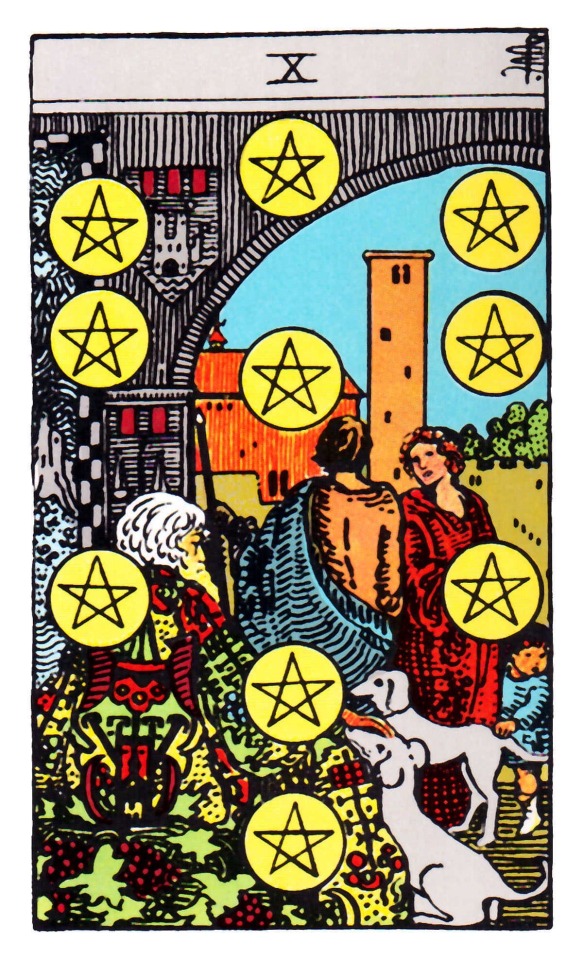
Is Tarot Jewish?
No. Tarot was not a Jewish creation and nor does it come from Kabbalah. When Waite made his famous RWS deck, he was a Christian occultist/magician and part of the Hermetic Order of the Golden Dawn and also formed his own Fellowship of the Rosy Cross. He was a Catholic involved in 'western esotericism' and fell under the learnings of Eliphas Levi. Eliphas Levi was not a Jewish man. He was a French gentile occultist who changed his name from Alphonse Louis Constant to Éliphas Lévi Zahed -- why? He wanted his magical works to sound more authentically exotic (aka, Jewish) because he appropriated from Jewish mysticism and skewed it for his own wants. He believed that Kabbalah was the "linking factor between the Old Testament and the New Testament", and that is rooted in Christian supersessionism, a violent ideology that has resulted in many murders of the Jewish people. Another example is the french occultist, Court de Gébelin, who claimed that the Major Arcana were numbered to correspond to the 22 letters in both the Egyptian and Hebrew alphabets. It didn’t seem to trouble him that at the time different versions of the deck that was in circulation sometimes had more than and sometimes less than 22 Major Arcana cards. Or that ancient Egyptians didn’t use an alphabet.
So no. Tarot was created as a playing card game, sprung up in Italy, Germany, and France. It was not intended for 'occult' use until much later. And still, in no way shape or form, was it ever Jewish in origin. In the Torah, besides certain kinds of divination/tools, divination is forbidden and Tarot is considered avodah zarah (idolatry) because it is a non-Jewish practice.
Now I'm sure you're asking: Well you read tarot, why are you telling me this? Aren't you incriminating yourself?
I'm telling you because I want to stress and push back against cultural appropriation and Christian supersessionism that is rooted in these beliefs, and I want to make it clear that the relationship between a Jew, halacha, and G!d is on them - but to not fool oneself claiming a non-Jewish practice is actually Jewish. That, I think, is more ludicrous than just using tarot.
Alright, now onto the fun parts and what you are here for.
My Jewish Theology with Tarot
So, this is all my personal theology which obviously you do not have to share. I am Jewish and practice religious Judaism. I believe that there is only one G!d, Hashem, and that They are everywhere and in everything. In academic terms, I am a monotheistic panentheist. This aligns with a lot of Jewish mysticism, especially Chassidus, and consider myself a crossover between the Conservative Jewish denomination and Renewal, with a solid base in the American Neo-Hasidic movement . (Conservative =/= political right-wing in the Jewish movements). I deeply respect Jewish traditions, halacha, and have put a lot of thought in what I believe and how it relates to tarot. There will be of course Jews who disagree with me, but I'm not here to dwell on that.
When I read tarot, I am not asking the cards to tell me the answer I am seeking - the cards are a tool, an object, and do not possess spirits of their own. I am asking G!d. Now, angels won't interfere, but sheydim (demons) can. I will talk about protections/rituals one can use to avoid sheydim meddling later.
As for questions like: How does one ethically divine? How much power do interpreters have? Does G!d plan everything? Do we have free will when it comes to our future? Let’s look to source texts.
“All is foreseen, but free will is given.” —Rabbi Akiva, Pirke Avot 3:15
"Rabbi Bena’a: There were twenty-four interpreters of dreams in Jerusalem. One time, I dreamed a dream and went to each of them to interpret it. What one interpreted for me the other did not interpret for me, and, nevertheless, all of the interpretations were realized in me, to fulfill that which is stated: All dreams follow the mouth of the interpreter." —Berakhot 55b
"The Gemara asks: But doesn’t Rav say that any divination that is not like the divination of Eliezer, the servant of Abraham, when he went to seek a bride for Isaac (see Genesis 24:14), or like the divination of Jonathan, son of Saul, who sought an omen as to whether he and his arms bearer would defeat the Philistines (see I Samuel 14:8–12), is not divination? Since Rav did not rely on the omen in his decision making, he did not violate the prohibition against divination, and there was no reason for him to penalize himself." —Chullin 95b
"What is a diviner? One who takes his stick in hand and says, (as though he were consulting it), “Shall I go, or shall I not go?” So does it state, (Hoshea 4:12) “My people ask counsel of their stick, and their staff declareth unto them” (Sifrei Devarim 171:6). (3) מעונן — Rabbi Akiba said, Such are people who assign times (עונות plural of עונה “period”, “time”) — who say, “This time is auspicious to begin some work”; the Sages, however, say, It refers to those “who hold your eyes under control” (who delude by optical deception; they connect מעונן with עין “eye”) (Sifrei Devarim 171:9)." —Rashi on Devarim 18:10-12
"... here he does not rely on the אות which he had stipulated, but where he asked G’d in prayer for help, saying that if certain things were to happen he would regard this as a sign that his prayer had been answered favorably (compare Ibn Ezra there). When the Talmud Chulin 95 כל נחש שאינו כאליעזר עבד אברהם ויהונתן בן שאול אינו נחש, the meaning is that “any divination which is not like that of Eliezer or that of Yonatan ben Sha-ul is not a divination,” i.e. is not permissible, but is akin to relying on witchcraft [Unless the person requesting a sign does so as a prayer directed to G’d it is forbidden. Ed.]" —Sforno on Beresheit 24:14
“The true power of the tarot lies in its ability to channel a clear path for our deep intuition to shine through. Consulting the tarot can help clear creativity blockages, clarify ambitions, work through complex decisions, and make sense of emotions and relationships.” —Holistic Tarot, Benebell Wen
In my interpretation of these quotes, I gather a few things:
1. In Jewish thought, dreams are 1/60th prophecy. However, dreams follow the mouth, i.e. interpretations. Multiple interpretations can be true. Being a confident and learned interpreter is important. While I did not quote it, the sages also advise the one should pay your interpreters fairly.
2. Hashem has given humans free will, so we can make our own choices. That is unique to us as beings, unlike angels. G!d already knows the possible outcomes.
3. It is not divination to notice and realize patterns or answers as long as you do not use it as an omen to change immediate course - examples the sages mention in specific are "a piece of bread falls from your mouth, so you decide not to walk to the lake", i.e, seeking 'signs' and omens randomly to direct your life.
4. Rashi's explanation of what a diviner and sorcerer are, compiled from different Jewish texts. Now, I am not here to say "and this is proof Judaism and halacha are actually fine with divination!" Nope, in Bamidbar 23:23, it is very clear that Jews are told to get what they need from prophets or G!d themself, and do not need augury. What I am arguing here is that by these specifications, and connecting to my final point of what tarot actually is, tarot may not fall under that category depending on how you use it.
5. I wanted to highlight Sforno's commentary here because the way I read tarot is via prayer. Tarot is a tool, and when I begin a reading, I am not asking the cards, I am asking Hashem to use these cards as a sign and communication.
6. Finally, I quoted Benebell Wen because of her poignant understanding of how tarot is less about "fortune-telling" and more about a creative psycho-spiritual exercise for intuition and is more like a mirror to our subconscious telling us what is true. Fusing this with the ideas above, this is my short rundown of how I see and view Tarot: Tarot is a prayerful, spiritual tool as a way I can interpret and communicate from G!d, and I understand the cards themselves are not going to tell the future. Tarot is a mirror for the subconscious and a way for us to work through things we do not feel we can do on our own, be'ezrat Hashem (with the help of G!d).
Jewish Tarot Spreads
As I don't want to just post photos, I am instead going to include links to the tarot spreads I have found, to their origins so you can know the creator!The Archangel Spread
The Divine Threads Spread
Wisdom of the Hebrew Priestess Spread
Vessel, Offering, Ally Spread
Do Not Play It Small Spread
Rooting and Releasing Spread
Jewish Tarot and Oracle Decks
Eht/Aht Netivot Oracle Deck
Tu B’shevat Oracle Deck
Moon Angels Oracle Deck
Malakhim Meditative Cards
Raziel Tarot Deck (Out of Print)
Jewish Tarot (Never Printed, Can See All Cards Virtually)
72 Names Deck
Tokens of Light Deck
King Solomon Deck
Revealed by the Letters Deck
Cleansing and Protection
So, of course, this is so dependent on what you think is most important for you, as it is your practice. However, I will share what I do.
When it comes to doing readings, I have a very specific ritual. First, I light incense or a candle depending on what I feel like doing at the time. This is something I am still working on and trying what fits best for me and my cards. I will use incense smoke to cleanse cards or the "knocking" card trick. Then, I say two prayers - I recite the blessing:

"Blessed are you G!d, Ruler of the Universe, who opens the eyes of the blind.
The reason is because of the allegory that intuition and divination are connecting to a special type of sight. Then, in the case of the concern with sheydim messing with the reading, I have decided to use the protective angel prayer:

"In the name of the Lord, G!d of Israel:
May the angel Michael be at my right side,
and at my left side, Gabriel,
before me Uriel, behind me Raphael,
and above my head, Shekhinat El, G!d's presence."
This is traditionally recited at night, but I felt it was just as appropriate to call on these angels for protection. Plus, Uriel is associated with illumination and is a useful presence to have during these readings. In Jewish gemology, lapis lazuli is good for bringing understanding and grounding intuition, so I use that gemstone as well while I read. Eventually, I'd like to also get an onyx as it is associated with enlightenment and wisdom in Jewish gemology. I also use a tarot cloth with a hamsa and have a protective amulet pendant.
Finally, when I shuffle my cards, I sing a very specific phrase - the "ein od milvado" from Kohelet 1:2, in a tune that puts me into a meditative headspace - and I shuffle with my eyes closed, only stopping when I feel it is right to do so. I also use a kabbalistic meditation technique to allow the divine flow (shefa) from G!d's light flow through the crown of my head.
If you liked this work and information, consider tipping me at: https://ko-fi.com/ezrasaville!
Sources (I will post this in every post of this series):
Sefaria
Chabad
Tarot and the Gates of Light by Mark Horn
Torah, Tarot, and Tantra by William Blank
The Jewish Dream Book by Vanessa Ochs
Magic of the Ordinary by R. Gershon Winkler
Tarot Wisdom by Rachel Pollack
The Wisdom in the Hebrew Alphabet by R. Michael Munk
The Encyclopedia of Jewish Magic, Myth, and Mysticism by R. Geoffrey Dennis
https://www.telshemesh.org/
https://hsastrology.weebly.com/hebrew-zodiac-signs.html
https://ohr.edu/this_week/ask_the_rabbi/2394
https://www.gatesoflighttarot.com/
http://www.devotaj.com/
http://www.peelapom.com/
#jewish mysticism#judaism#jewish witch#jewitch#jewitchery#jewish witchcraft#tarot#jewish tarot#tarot readings#witchblr#tarotblr#divination#my post#mine#jewish#jewish tarot series#antisemitism#christianity#goyim you cannot use this info#it is not for you
411 notes
·
View notes
Note
You mentioned western localizations messing with Amy. Can you elaborate if you don't mind?
Of course!
I think the first thing to keep in mind throughout all of this is that I was referring to the old notion of “Amy is a psycho girl chasing after someone who isn’t remotely interested in her”. This is the big impression Sonic games (and I guess to some extent Archie Sonic, but I don’t want to get in there) left on fans during the 2000′s, and it comes mostly due to two main reasons:
The differences in western culture versus japanese culture (how we see relationships in general, the actual tropes surrounding Amy, etc.)
How the actual localization process was handled for each game, like the way Amy acts toward Sonic and other characters, how the games play said acts (cute vs annoying) and the way Sonic reacts to her presence.
It’s no secret that localization works during that era were spotty at best (that’s why you hear Ryan’s Sonic yelling “teriaaaa!” in SA2, or the general weirdness surrounding SA1), and while I personally don’t blame the people that worked on localizing the games (after all, the overall quality of videogame storytelling was pretty shaky back in the early 2000′s), I can’t ignore just how damaging those works ended up being for the canon. For example, cutegirlmayra talked about the differences between japanese and western Sonic for years now, take this quote from her post, a quote that I believe nails this whole thing on the head:
America treats Sonamy much like they do their franchise, a meme or joke to be poked fun of. Whereas, with a much more refined atmosphere, Japan treats Sonamy as an endearing and lovely couple. Though both resign to say they can’t really see Sonic ever ‘settling down’ or really being focused on romance. And,… that makes since to me. Knowing who Sonic is. But even that doesn’t mean he can’t have a crush XD (The heart wants what the heart wants, lol!)
More recently, stuff like “Unfortunately, I’m not inconvenient for my girlfriend” came to light, and that’s one of many examples where japanese Sonic was way ahead of its western self. This particular quote is from Sonic Battle and in the english version you don’t get anything remotely similar to that, instead Amy is left to look like she’s a crazy stalker, or that Sonic doesn’t accept her advances to a degree (that’s one major problem, how western Sonic tends to feel like he’s actually rejecting Amy while she keeps on trying.) It’s not coincidence that Sonic Battle is regarded as one of the worst portrayals of Amy in a Sonic game.
If you start digging on what the creators actually intended for Amy, you'll find lots of good intentions toward her and the framing of her dynamic with Sonic (which isn’t the only aspect of Amy, mind you, but my claims about western localization originally came from a SonAmy post so I naturally focused on that, sorry haha.)
For example, last year I looked into how Sonic Unleashed handled SonAmy, and while my initial research was pretty sweet (the english version of Unleashed!Amy is really good if you spend time talking to her), the real kicker came as soon as we (me and cutegirlmayra) started looking into interviews with ex-Sonic Team writer Shiro Maekawa and cross-referencing information regarding the actual writers that were involved during that 2000′s era. The result? There was an entire council at SEGA of Japan dedicated to approve the way Sonic characters were presented in all official media, and they approved all of the key SonAmy moments back then, even more that western audiences didn’t get to see (more on that below.) Most if not all the japanese Sonic writers involved in that era (Maekawa was both a writer and part of said council) left around the end of the decade, after Sonic Unleashed (2008) and Sonic and the Black Knight (2009), and ever since that most of the problems shifted from “this is how SEGA of America is localizing Sonic games” to “this is the very poor state of Sonic writing in general”, so, dead end for now.
Then you have situations like with Sonic X, a show handled by Sonic Team and the official Sonic writers of that era working in some of the most iconic episodes... just to see their work censored by 4kids in America and the subsequent dubs that used that version as a basis (from what I’ve heard not all dubs are censored, though.) That’s why you’ll see fans imploring you to watch Sonic X in japanese instead of the english dub, since the series was a lot more involved with the pairing and the general simbolism of some of its touching moments (they used actual love songs for them, for crying out loud), which led to some funny facts, like how the Latin American Spanish and the French dub both ignored the mandate about muting Sonic’s words to Amy in Episode 52, leading to moments like Sonic promising Amy he won’t leave her again (LatAm) or just straight up telling he loves her (the french were on fire with that one.) Sonic X was the one true vision of Sonic Team, and the way it was butchered for western audiences is still baffling to this day.
So, what’s the deal with Amy then? In theory she’s a cheerful, happy-go-lucky girl with a very strong sense of justice, super-determined to help anyone in need (even enemies like Metal Sonic) and, depending on the situation, pretty impulsive. She’s particularly loyal to her friends, and she acts like the emotional support of the group. You’ll see her filling that role regardless of how good or bad the localization is (SA2 Amy helped Shadow realize his true purpose, Heroes Amy is the beating heart of her whole team, Unleashed Amy is the only one who doesn’t lose hope on Sonic when Perfect Dark Gaia rises); yet the ways by which these traits were shown in the games varied a lot, and that’s how we reached a point where a good chunk of the fandom thinks Amy is a stalker. Japan portrayed her acts as cute, as very respectable traits of a great female character; the west portrayed her mostly as a nuisance the gang had to carry around, even to the point of misinterpreting some of her quotes that aren’t actually bad (for example: “If I had to choose between the world and Sonic, I would choose Sonic!“ in Sonic ‘06.) And while this is no longer the case, nowadays there’s a whole different discussion surrounding making Amy better by making her “more mature” (which is also another topic raised here in the west, like, this whole discussion never ends! haha)
I feel like I got lost and came back several times while writing this reply. At the end of the day, it’s a long topic to tackle and I think the best I can do right now is forward you some more information. My friend beev did some great work translating my own Spanish articles tackling the Japan vs Western differences (it’s pretty much most of this reply.) And then there’s @skull001, he’s very vocal about the ways Amy’s character was messed with (including stuff like Amy being missing from the back of Advance 1′s box, the Sonic X english dub or the fact SEGA is still reluctant to count her as part of Team Sonic), and if there’s someone I’d listen when it comes to knowing pretty much everything about Amy, it’s gotta be him... and cutegirlmayra, of course. I hope this helped, though!
#ask latin dr robotnik#sonic the hedgehog#amy rose#sonamy#sega#hannahcbrown#i'm sorry this took way too long to write haha
123 notes
·
View notes
Photo
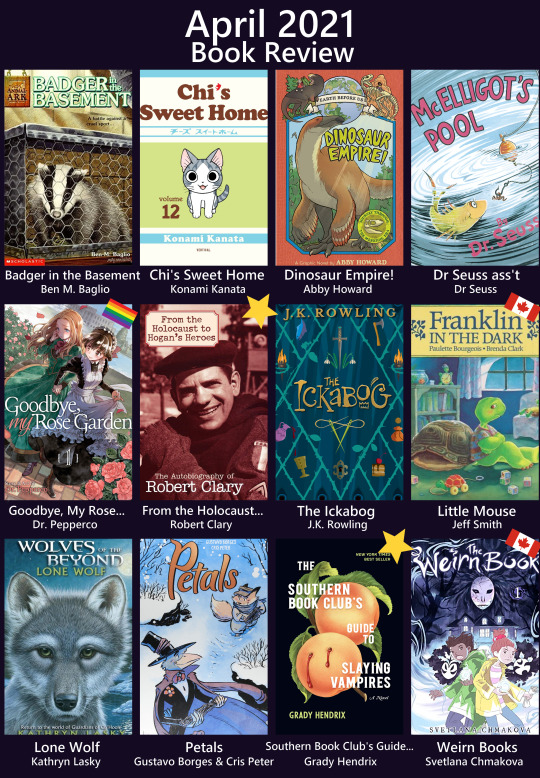
April l was apparently the month for me to revisit some children’s authors who are steeped in controversy at the moment. So here’s my hot (well, lukewarm) takes on issues that absolutely do not need a single other person talking about them. Also some actual good books that I read this month!
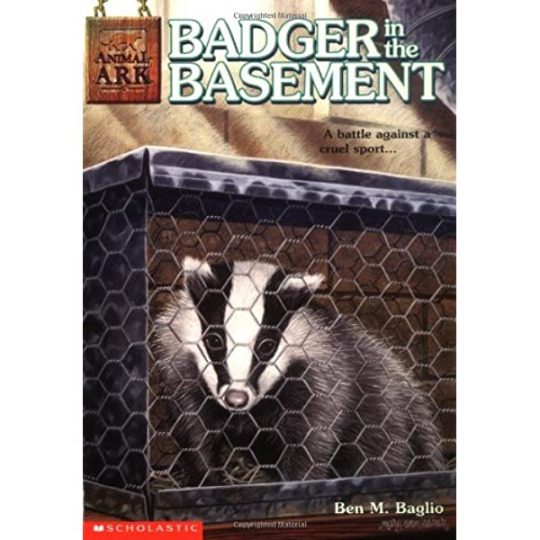
Badger in the Basement
The Animal Ark books are a childhood classic — though I recently found out that apparently there’s a difference between American and British publications, and the American versions didn’t include a lot of actual COOL animals which is… bizarre. As a Canadian stuck in the middle of this, this nonsense drives me nuts. This one was about the main character, the daughter of pair of vets, trying to protect a local badger sett from men wanting to participate in badger digging and baiting. These books are always feel-good, and it was a nice single-day-read while I waited for a library book to come in.

Chi’s Sweet Home
The cutest manga series about the misadventures of a little kitten, Chi, who has been adopted by a loving family. I’ve never bothered to read them in order, but apparently this time I stumbled across the last in the series -- whoops! Still, stood on it’s own pretty easily, and it was a fun read! Things get tense when the family realize that they may have found Chi’s original home… and may have to give up Chi forever.
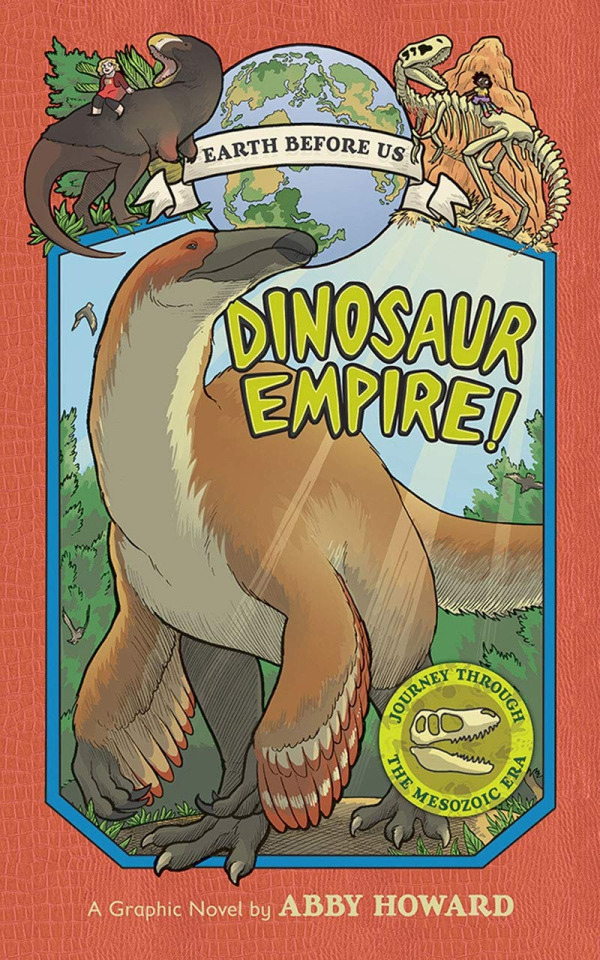
Earth Before Us: Dinosaur Empire!
This was an odd graphic novel, I feel like I’m not sure who the target audience was exactly. It was a nonfiction comic done in a Magic School Bus style, with the purpose of teaching current, up-to-date facts about the animals that lived in the Mesozoic Era. If you’re into dinosaurs, you’ll probably enjoy this! The art is absolutely adorable, I love the dinosaur illustrations, and I learnt some really neat facts. That being said, the pages are really dense, and there’s a lot of info crammed in… some of it will probably go way over a child’s head without specific additional teaching or a very strong personal interest. But that being said, a dinosaur obsessed kid is still probably going to really dig this… as would a dinosaur obsessed adult. It wasn’t my cup of tea exactly but I’m sure it is someone’s.

assorted Dr Seuss Books
I love these types of controversies because it means getting to listen to every moron who has never had an opinion on Dr Seuss ever start generating a mile of them out of the aether. So many people are so mad about the six books that are getting retired and I bet most of them haven’t even read them. These are not the friggin Cat In The Hat or The Lorax or even the likes of Yertle The Turtle. I was raised by a grade one teacher, was a voracious reader who loved Dr Seuss, and wrote my university thesis on children’s literature, and I still only knew two of the six books on that list. So by all means, if you want to write an essay explaining why those specific books are worth clinging to, feel free, but if you haven’t even heard of them maybe it’s not a big deal. *grumble*
Anyway, my grousing aside, it gave me the urge to reread a bunch of Seuss books, including the two retiring books I personally knew: McElligot’s Pool and To Think That I Saw It On Mulberry Street. I do still enjoy both, especially McElligot’s Pool which always sparked my imagination, but it’s obvious why they’re being retired and I personally think it’s the right choice. There’s so much good kidlit out there, we can survive without these.
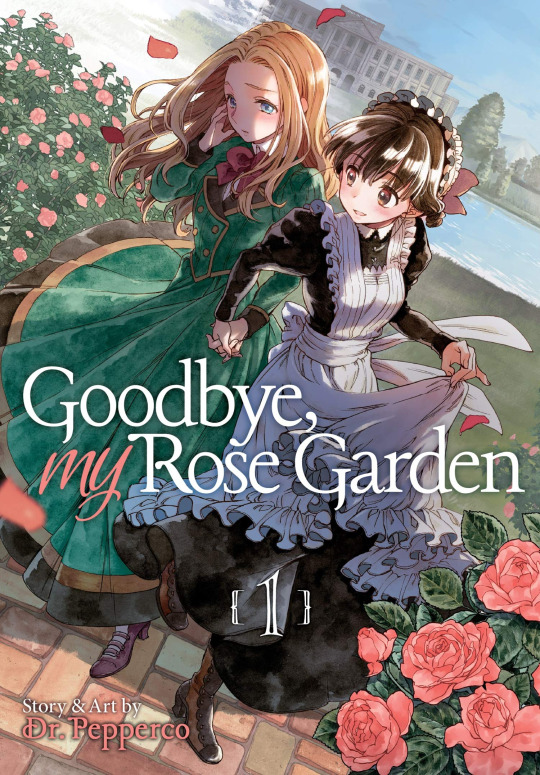
Goodbye, My Rose Garden
A f/f romance manga, fairly standard fair though cute if you’re looking for some historical angst, pretty dresses, and mutual pining. A young Japanese woman moves to England in the hopes of meeting a writer (Mr Frank) who she has long admired. Along the way she is employed by an enigmatic woman with plenty of money, rumours, and melancholy following her. I’ll be honest, uncut romance isn’t really my genre, but I’ll probably still try to the second book to see if the story picks up.

From The Holocaust to Hogan’s Heroes: The Autobiography of Robert Clary
It’s no secret that I’ve been on a Hogan’s Heroes kick. This is the autobiography of Roberty Clary, who plays my favourite character in the show, Louis Lebeau. And holy shit what a life this man has had. He was a Jew growing up in France before the start of the war, and who was one of many children taken away from his family and sent off to the concentration camps in Germany. This was an amazing, intense, inspiring, and heartbreaking read… it has Clary’s voice all over it, and it tells everything from the charming childhood he had, to the horrors of the concentration camps, the brutality of survival, and then about his exciting journey into the entertainment industry afterwards. It’s an experience, would recommend if you’re a fan of the show.
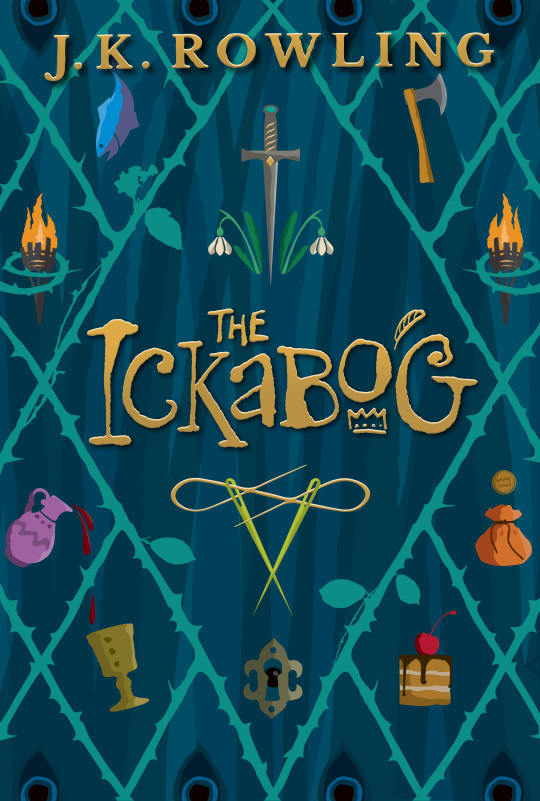
The Ickabog
The second controversial author I read this month. Originally I was going to give Rowling’s new book a miss, given everything that’s been going on over the past few years, but in the end my curiosity got the better of me. Politics aside, it was a fun read! Not groundbreaking, but enjoyable enough and written in an interesting style. It didn’t read the same as a lot of modern kidlit, it felt more like a cross between a classic fairytale and a Dahl book. Perhaps a bit like Despereaux. It tells the tale of how an idyllic country gradually falls into ruin through the ignorance, inaction, and greed, and how a supposedly fictional monster hides the very real, human monsters at the heart of the country. It was cute and pleasant and I’m glad I decided to get it from the library, though for anyone who is choosing not to engage for political reasons: you aren’t missing anything major.
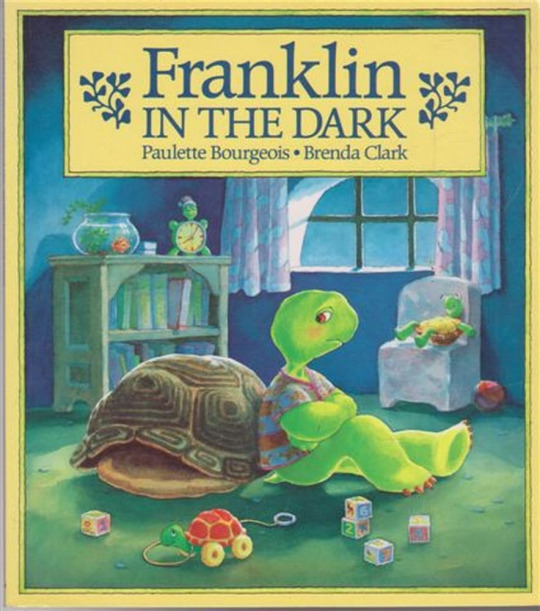
Franklin In The Dark
A Canadian classic. I don’t think there’s a single person my age who hasn’t read or been read a pile of these books, and the nostalgia is so comforting. I found this on Youtube and listened to someone read it to me, and honestly 10/10 would recommend for a calm evening.
The big reason I decided to seek this one out though, was because I finally got to the M*A*S*H episode that inspired this entire series! In the episode C*A*V*E, in which Hawkeye is freaking out over his claustrophia while the camp is forced to take shelter in a nearby cave during some intense shelling, he mentions that if he had been born a turtle he would have been afraid of his own shell, and that the other turtles would make fun of him cause he’d be forced to walk around in his underwear. And so this first story about a young turtle who’s afraid to sleep in his own shell and drags it around behind him. So if you were ever curious, Franklin the Turtle is in fact named after Dr Benjamin Franklin Pierce. (this is also why the French version is named Benjamin!)

Wolves of the Beyond: Lone Wolf
I loved the Guardians of Ga’Hoole books as a kid but I never read the Wolves of the Beyond series. This first book was an interesting read, Lasky does a great job creating worlds and societies for the animals that inhabit them. Lone Wolf is about a deformed wolf cub who was abandoned in the wilderness to die. And he would have, if a desperate mother bear, who had recently had her only cub killed, hadn’t stumbled across him and saved him, vowing to raise him as her own...

Petals
A “silent” graphic novel. It has beautiful artwork and is told entirely through pictures, no text at all. It’s loves and heart-wrenching, though it left me feeling somewhat unsatisfied… I felt like there should have been more. Still, a neat story.
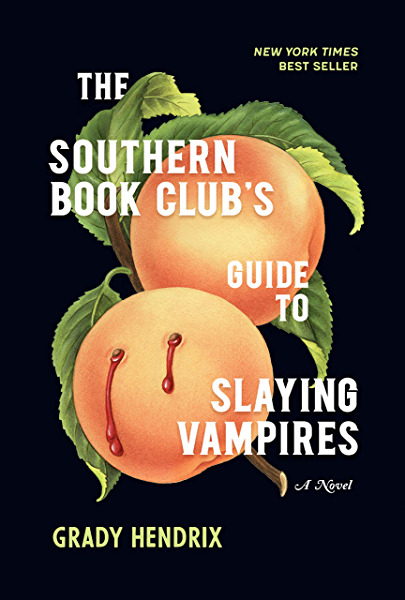
The Southern Book Club‘s Guide To Slaying Vampires
What a banger of a novel!! I can’t recommend this one enough. It’s about a group of suburban mothers in the ‘80s who form a book club out of a shared need for community and a love of grisly true crime novels. But when a strange drifter appears in town and starts setting down roots… and when children begin disappearing… these women need to band together to confront the horrors that have invaded their neighbourhood, and face down not only a terrifying monster among them but the patriarchal system that allows it to flourish. To quote the preface:
“Because vampires are the original serial killers, stripped of everything that makes us human — they have no friends, no family, no roots, no children. All they have is hunger. They eat and eat but they’re never full. With this book, I wanted to pit a man freed from all responsibilities but his appetites against women whose lives are shaped by their endless responsibilities. I wanted to pit Dracula against my mom. As you’ll see, it’s not a fair fight.“
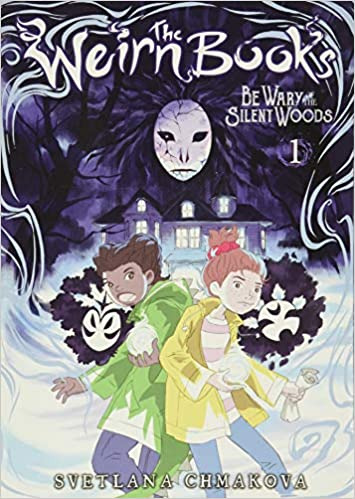
The Weirn Books: Be Wary of the Silent Woods
I love Chmakova’s graphic novels, though I’ve only ever read her slice-of-life middle grade series before. This one is pure fantasy and very fun. It’s about two cousin “weirns” — witches with demon familiars — who attend the local night school. Things get strange though when an ominous figure appears outside the old, abandoned school house deep in the Silent Woods, and begins tempting children down its path…
I’m very much looking forward to word of a second book and was honestly kind of surprised that I haven’t heard more about this book given how popular her other series is. This has all the same charm and quirks but for those of us who prefer stories based in fantasy rather than reality.
And A Bonus...
For some masochistic reason I got a Garfield book out of the library. Jeez, if I didn’t love these as a kid, I found them absolutely laugh out loud hilarious, and now I just don’t see it anymore. But here I will share the one strip in the book that actually made me laugh

#book review#book reviews#chatter#dr seuss#hogan's heroes#robert clary#the southern book club's guide to slaying vampires#animal ark#dinosaur empire#the weirn books#svetlana chmakova#canadian literature#canlit#kidlit#children's literature#wolves of the beyond#mash#franklin the turtle#chi's sweet home#manga#goodbye my rose garden#kathryn lasky#the ickabog#jk rowling
37 notes
·
View notes
Text
My Top 10 Favorite Songs From Jack and the Cuckoo-Clock Heart: Concept Album and Movie
Here I will rank my top 10 favorite songs between the movie and concept album versions of Jack and the Cuckoo-Clock Heart. I personally believe that the French concept album songs are quite different from the translations in the English movie, so I will rank them independently. That means that one song may end up on this list twice for the reasons I will explain as we go down the list. Let’s start from number 10:
10. “Mademoiselle Clé”
As simple and intimate as this scene in the movie is, I’m going to have to put the French version on this list. Mainly because it stays a bit more true to the scene in the novel which is much less PG than the movie. The French song shares the line “...she works her Blue Fairy magic on me, like in Pinocchio, but more real. Except it’s not my nose that’s growing longer.” The implications of that quote in the novel and the French song are obvious, but are much more loosely intimated in the film. Also, I simply prefer the composition of the French album song over the movie version.
You can find the French song from the concept album here on Dioysos’ official Youtube channel and the scene from the movie here on a fan’s Youtube channel.
9. “Tais-Toi Mon Coeur”
This song can only be found in the concept album and corresponds more directly to the plot of the book than the movie. The title means “Be Quiet my Heart” (or, more aggressively, “shut up, my heart”). It is such a catchy song and the old music video associated with it has a really cool animation style which some hoped would have been the style of the entire movie, but alas.
You can find the official song here on Dionysos’ official Youtube channel and the music video here on a fan’s Youtube channel.
8. “Flamme A Lunettes”
There are actually three versions of the song “Flame with Glasses” because it also shows up in the book. The book version is quite short, and is actually the most similar to the movie for that reason. However, the song in the concept album encapsulates more of the action in the novel itself, not just the song that Miss Acacia sings. Additionally, the imagery in the song from the album is much richer and Jack and Miss Acacia’s banter goes on for a little longer. Even though the scene in the movie is visually intriguing and captures some of the imagery with its setting, I’m going to have to put the album version on this list.
You can find the French song from the concept album here on Dionysos’ official Youtube channel and the scene from the English movie here on a fan’s Youtube channel.
7. “L'école De Joe”
“The School of Joe” can only be found in the movie in its instrumental form, so I don’t want to make a direct comparison to the lyric version in the album. However, I don’t think I have to. Both incarnations capture the same menacing energy and climactic build, and what the movie may lack in lyrics it sure makes up for in the scene. And while I hate to put Joe nearly halfway up my list, the song is just too powerful to put any lower.
You can find the French song from the concept album here on Dionysos’ official Youtube channel.
6. “Malagueña”
Doing the research on the Spanish songs in the album and the movie sure gave me a run for my money because I had no idea about the multilingual talents of Olivia Ruiz. She both voices and sings Miss Acacia in the French movie, the concept album (which is in French, of course), as well as the Spanish songs in both (if not all) of the translations of the movie. Her version of “La Malagueña”, a traditional Mexican Huapango song, was originally covered on two of her albums [1], and is of course identical in the concept album and the movie because there is no need to translate it. It was tough for me to choose between “Malagueña” and “Quijote”, but for the wonderful and fantastical elements surrounding it in the movie and for the great references to quotes from the novel during the scene, “Malagueña” makes it on this list.
You can find the song from the concept album here on Dionysos’ official Youtube channel and an amazing live performance of it by Olivia Ruiz here.
5. “Le Jour Le Plus Froid du Monde”
Thanks to this Youtube video and the fanart included in it, “The Coldest Day on Earth” was the first song I ever heard from the “La Mécanique Du Cœur” concept album and was how I discovered the movie in the first place. I have always been an enthusiast for anything vaguely steampunk, and a rhythm set by cuckoo-clocks is exactly the kind of song I’m looking for. Once I figured out what the French lyrics actually mean, I knew I needed to find out more about this weird world. It took me exactly two years to get my hands on a copy of the book after watching the movie, and I discovered the entire concept album around that time as well. Perhaps this song should be number one on this list because it is literally the reason I have this blog to begin with, but I just can’t deny how much I love the other songs at the top of this list.
I also can’t fail to mention the sort of reprised version of the song, called “Le Réveil Des Coucous Vivants”, or “The Awakening of the Living Cuckoos” which makes an appearance very early in the movie, but is actually the last song on the concept album. If you want to experience an amazing example of how cuckoos can be used as incredibly haunting musical instruments, I recommend you check it out.
You can find the French song from the concept album here on Dionysos’ official Youtube channel here is the link to “Le Réveil Des Coucous Vivants” on their channel as well.
4. “La Panique Mécanique”
I absolutely love how much this song builds and how it captures the experience of traveling on a train alone for the first time. This song does make a shortened appearance in the movie during Jack’s train ride, but I’m not a huge fan of how they altered the lyrics. Another thing that makes the French album version so much more striking than the English movie version is Alain Bashung’s [2] performance of Jack the Ripper’s lines. His voice is so mysterious and menacing and creates the perfect bridge into the chaotic latter portion of the song. Perhaps it is my relative lack of exposure to a variety of French voices, but his rendition just hits different than the English one in my opinion.
You can find the French version from the concept album here on Dionysos’ official Youtube channel. Unfortunately I can’t find a good link to the scene in the movie, so you will have to do some digging yourself if you are interested.
3. “Jack Et La Mécanique Du Cœur”
In third place is the French concept album version of the titular song “Jack Et La Mécanique Du Cœur”. It is the very first song on the concept album and serves as a sort of summary for the plot and kind of resembles a Greek chorus [3] that speculates what our protagonist Jack is going to do. It includes some interjection from Georges Méliès and ends with him saying “Et maintenant, bon film” (”And now, enjoy the film”), which I find very cute since it’s sort of like we are watching Méliès’ own film adaption of the story, which he tells Jack during the movie that he could very well make.
You can find the French concept album version here on Dionysos’ official Youtube channel.
2. “Jack and the Cuckoo-Clock Heart” (English version from the end credits of the movie)
Maybe this is a cop-out, but I just couldn’t decide which version of this song to put on this list, so I included both. After much deliberation, I decided to put the English version at number two instead of three. It seems sacrilegious somehow, but I just had to put it a little higher for a couple of reasons. One, I discovered it first so it lodged itself in my consciousness before the French version did, and two, I just can’t get over Orlando Seale’s voice in this song. Of course Mathias Malzieu is completely unparalleled, but there is something about Seale’s optimistic and gallant tone that is completely enrapturing.
It’s sort of a bummer that this amazing song only shows up at the very end of the credits, but I must admit it is a difficult song to place anywhere else in the film considering the inexplicable presence of Méliès (which makes it hard to put at the beginning for the sake of the plot). But, it also doesn’t make sense at the end since it’s a summary of what we just watched and the final line tells us to “enjoy the film” as the last few credits roll up on the screen. Regardless, I should be happy that the song was ever translated into English because I can thank it for keeping my interest and passion for the story alive.
You can find the English version here on a fan’s Youtube channel.
1. “L’Homme Sans Trucage”
And finally, number one. You’d think “Jack and the Cuckoo-Clock Heart” would have taken this spot considering how much I went on about it, but “L’Homme Sans Trucage” (”The Man Without Special Effects”) from the concept album has an absolutely tangible feeling of adventure and boundlessness with instrumentals that are out of this world. Who else but Dionysos can mix record-scratching, keyboard, banjo, drums, and more simultaneously and make it sound that amazing? The song perfectly captures the “coming of age” theme of the story, and the imagery in the song is beyond inspiring.
I also need to mention the reference in the title and in the chorus to Méliès’ diary in the story which he titled “The Man without Special Effects” (or “The Man Who Was No Hoax” per the English translation of the novel). That diary in both the movie and the novel is Méliès’ retelling of his time spent with Jack (which is why I think putting the song “Jack and the Cuckoo-Clock Heart” in the beginning of the movie would be so cool) and is emphasized a bit more in the novel than in the movie. That diary makes a sort of legend out of Jack, and its title implies entirely different layers of meaning between the movie and the novel.
To give the movie some credit, though, the scene is a lot of fun, and I love how they styled it à la Méliès with paper cutouts and the reference to “The Impossible Voyage” [4] by the real Georges Méliès. The scene stays true to the surrealism of the story, and is definitely quite enjoyable. But, in the end, I have to give “L’Homme Sans Trucage” the number one spot on my list.
You can find the French version from the concept album here on Dionysos official Youtube channel and the scene from the movie here on Shout! Factory’s Youtube channel.
There are 31 tracks (including interludes) on the complete “La Mécanique Du Cœur” concept album, so of course I couldn’t include them all here. The styles and tones of each song are so unique, and I think the entire album is worth a listen. I first listened to the entire album roughly concurrently with the plot of the novel, and that was a pretty great way to experience it, in my opinion. But, if you’re like me and you aren’t exactly fluent in French, it’s not like you’ll get many spoilers from the songs.
_____________
All quotes are from the film and/or novel “Jack and Cuckoo-Clock Heart” by Mathias Malzieu unless otherwise specified.
Sources and additional information:
[1] https://en.wikipedia.org/wiki/Malague%C3%B1a_Salerosa
[2] https://en.wikipedia.org/wiki/Alain_Bashung
[3] https://en.wikipedia.org/wiki/Greek_chorus#:~:text=A%20Greek%20chorus%2C%20or%20simply,voice%20on%20the%20dramatic%20action.
[4] https://en.wikipedia.org/wiki/The_Impossible_Voyage
#jack and the cuckoo-clock heart#jack et la mécanique du coeur#mathias malzieu#olivia ruiz#malaguena salerosa#georges melies#orlando seale#the impossible voyage
25 notes
·
View notes
Photo

** Disclaimer ** - I am NOT a professional graphic designer, however I did work with many of them for different occasions and I have been designing my own things for over 10 years now. All the knowledge I have and share with you in this post was gathered by me over the course of 14 years.
I recently started my font series, where I shared my favourite fonts of different typefaces. People have been requesting to post my favourite font pairings and as much as I love to do that (and I also will, just scroll down to the end of the post to see them), I think it’s also important for you to understand, why they work together nicely and what you should look out for, if you plan on pairing typefaces yourself.
Understanding fonts and typefaces
There are so many to choose from nowadays. You have probably scrolled through the JUNGLE of fonts that you can find online nowadays, some are free, some aren’t and they all go by different category names:
Serif - Sans Serif - Script. All of them can also be Display fonts.
What do they mean?

A serif is a small line or a stroke attached to the end of a larger stroke. So all the little strokes that I circled in red. The most common serif font is probably Times New Roman, which I also used in the picture above (hence TNR).

Arial is a sans serif font, and also one of the most common ones. Sans serif is translated from french, sans meaning “without” - so it’s basically a font without the little strokes, much more clean and modern looking.

Now let’s move on to script fonts, which are more commonly known as handwritten or brushed fonts. Bombshell pro is a script font based on the looks of modern hand lettering.

Display fonts can be fonts from all the different typefaces above. They’re usually used in larger sizes for e.g. headlines or logos, instead of bodies of texts, like Times New Roman or Arial are mostly used for. Abril Display (I used it in a bold weight) is a display font, as well as a serif font.
Now that you know the differences between these typefaces, let’s dive into the different font weights.
Many serif, sans-serif and display fonts come in different weights (thin, light, normal/regular, bold, extra bold, black.. you name it). This is important as it plays a fundamental role in pairing fonts together.
Playing with different weights can help you underline the importance of the text you’re writing. I keep bolding phrases and words throughout this post, so you know to keep these in mind PLUS it’s easier to find the part of the post you are interested in. This also works for headlining on your graphics or gifsets!
Pairing different font weights
I will use the simple phrase “I will remember you” throughout the following part of this post.
First you need to figure out what you want to highlight. Do you want to highlight, that you will REMEMBER them? Or do you want to highlight that you specifically remember THEM (in the phrase ‘you)? Lay it all out for yourself, so you know exactly what to do.


The difference with these two examples isn’t too big, as you might have noticed. I used the regular and bold types for these examples. However, fonts like Avenir or Helvetica come with thin or even ultra light versions and you have more to play around with.

Script fonts usually don’t come in different weights, however you can utilise Photoshop to apply its bold addition to the fonts. It usually doesn’t look too nice though, so be warned!

Also, script fonts are harder to pair with one another, because it’s easier to cause an ‘overload’ for our eyes with pairing them depending on their level of ... let’s call it fanciness.
Now, you can pair the different weights together like this, centred.. and boring.. or you can play around with different font sizes, weights, kerning (click here to find out what kerning is) and positions. It’s fun, I promise! Just make sure you don’t forget which word(s) you want to emphasise!


Pairing DIFFERENT FONTS with each other
Now here’s the part people have asked for haha.
The first thing I want you to understand is, that the less is merrier does apply in this case. I personally n e v e r pair more than three fonts together (and I only use three different fonts for an entire corporate design including a website), two usually work the best!
For two different fonts to work nicely together, you (again) have to think about what you want to emphasise and create some kind of hierachy. In order to create an appealing design, you need to catch the viewers attention to the word or phrase you want. Create a focal point, something the eye is immediately drawn to. And then you add to it with simplicity.
You really have to think about what you want to be seen first and what you want to be seen second (on the base of using two different fonts).
Take a look at the fonts you have chosen. Display and script fonts usually need to be a larger size to be readable or to make them look good, so you probably want to use that one as the top of your hierachy. Also fonts with a heavier font weight tend to work better as the leading font. To accompany your leading font, choose a thinner, more simplistic companion. Why? Because if you use two heavy fonts or two fancy fonts (script, black, brushed etc.), your eyes will have a hard time concentrating on who is more important.


I hope this example helps you to understand what I mean.
In the first picture you see the whole thing as ONE block, because your eyes don’t know where the exact focal point lies. They don’t know which word they should concentrate on. The second one, however, gives your eyes clear instructions on where the importance of the quote/phrase lies.
Now how do you find out, if two fonts actually go together? Sometimes it’s also about the look of the whole design in general, if two fonts go well together or not. However, there are some things you can look for before you pair fonts:
Have a look at the weight, spacing/kerning, strokes in general and their width to figure out, if the two fonts you have chosen are different enough from each other, to actually pair well. Fonts that are too similar to each other have the same effect as shown above.
At the same time please also keep in mind, that they have to have some similarities, such as their general proportions and heights. If these parameters are too different, it might doesn’t look as good (there are some cases where you can make it work though, but you need to play around a little here).
If you made it this far, congratulations :D
This is not the ultimate guide to how you will always pick the right pairing of fonts, but it’s a start and something you can work on and evolve from! I hope it helped you. Feel free to message me, if you have any questions left. And now to what has been requested in the first place.
Here are some of my favourite font pairings:

(Avenir Next at kerning 200 + Abril Fatface)

(Avenir Next at kerning 200 + Sunbreath)

(Bodoni FLF at kerning 300 + Alberobello Script)

(Almondia at kerning 60 + Billy Ohio)

(Boysen at kerning 75 + Saturday Rock)
I hope you found this useful! :) Feel free to share!
#typography#typography tutorial#pairing fonts#font pairings#resources#userlexi#uservaleria#usersophy#annasuser#tuseralex#usernums#userauden#font series#tutorials#mine
869 notes
·
View notes
Text
ok not sure how comprehensible this post is gonna be but! regarding the languages discussion, here are my thoughts about the anglo americans. be warned this post is long as fuck, but thank you so much if you do read all of it, and i’d love to hear your thoughts about it as well!
so i just wanna start with alfred’s name- alfred. i think he may be named after alfred the great of wessex, who may or may not have been the first king of england. he wasn’t technically the king of a unified england that we’d think of it as today- he was the king of wessex, as his title implies, but there was a point at which he was “in charge” or however you want to put it of most of present day southern england. anyway this presents the first of his issues with his identity. he’s permanently tied to britain beyond just his culture and most common language- his name is a reminder of who he “belongs to.” of course most people don’t know that and they just think it’s a little odd that this 19yo miles morales type is called alfred but eh, what are you gonna do.
then you have the fact that there’s no official language in the US, which makes things a little harder for him. he’s never sure what language he’s supposed to be speaking in, as the human representative of america. he thinks it should be english, seeing as that is the lingua franca, but there’s times when he just doesn’t vibe with english as a language. i mentioned before that he struggles with keeping his (spanish) dialects straight (which @cupofkey summed up as immigrant-kid-syndrome and that’s exactly it), although its not limited to just spanish. he also has a hard time keeping other shit in line, to the extent where his thoughts are a messy jumble of languages, concepts, images, and feelings. this is most evident when he’s nervous, because his accent will get super thick and he’ll start just saying the words that pop into his mind, even if they’re in another language or straight up not words at all. the only peson who can understand him when he’s doing this is canada. both of them are countries of immigrants, although they are different in who immigrated and when, so they dont have the exact same nervous tick language, but it’s close enough that they can communicate well. it’s sort of like a more global version of europanto? might sound something like this to an outside observer, but again, more global (also for the video they dont start talking until 1:17).
america and canada also have a sort of inextricable bond because of the first nations people. the first tribe that comes to mind are the members of the okanagan national alliance, which straddles the present day border of british columbia and washington state (this is also something america shares with mexico). it’s caused a lot of pain between them personally, and with the okanagan nation. just as the border itself is vague- though the us-canada border is more respected than the okanagan borders- the parts of their identities are also vague. they feel bits and pieces of themselves ebbing and flowing, and matt and fred have gotten into arguments about it because they struggle to define their identities and they just want to be able to explain themselves to themselves. but you know that often winds up causing friction with the okanagan nations, because whatever issues with identity regarding their indigenous people fred and matt are having. they’ve got it worse, only in a sort of..negative image. like whereas fred and matt feel it on the fringes of themselves, making it so they cant tell where they end and other nations begin, the okanagan nations feel themselves being slowly eroded. none of them want each other to suffer, though, because the okanagan people can be americans and canadians and okanagans all at the same time.
this also applies with the american border with mexico, seeing as there’s some areas in the southwestern us where spanish is spoken more than english. when he’s down there, freddie finds it easier to communicate than when he’s speaking english. chicano is his language just as much as english is- he just sort of became able to speak it when the west was colonized, and he already knew spanish for business purposes, so there ya go. there are some issues with that though because the spanish in the west is primarily from mexico and central america, whereas the east is more from the caribbean- like how miami has a large cuban minority. so he’s got a weird sort of chicano english too, because it’s no longer “pure” chicano. pure is a very loose term there because there is of course variation within southwestern chicano speakers. angelinos don’t have the same chicano as nuevomexicanos. anyway i think he’d get it mixed up with spanish proper or spanglish a lot because of the similar phonetic rules. i’m not sure about any indigenous tribes who have land that straddles the us-mexico border, but that’s probably not alfred’s biggest worry with That Border. actually no i think he might purposefully talk in an aggressively chicano dialect whenever someone in the government wants to talk to him about the ice concentration camps. like he usually doesn’t try that hard to keep the wrong language out of his mouth but he will go Full Chicano, just to make them uncomfortable and to try to get the point across that he can literally feel the physical pain of the people trapped at the border in those camps. but this also causes some tension with the countries of origins of those people, seeing as they can also feel that pain. there’s quite a lot of discourse between america, mexico, guatemala, honduras, and el salvador about that, because none of them quite know what to do. they argue again about whose pain it is and how they should, as nation personifications, deal with it.
another thing that he struggles with where matt is concerned is with his indigenous languages. the languages of his northernmost people are the most at risk and endangered, and some are actually in the process of dying. he hates that, because as much as he wants to act like he speaks just SCE and quebecois, he doesn’t. he knows all of his people’s languages, and it makes him feel like he’s losing his identity a little bit when his indigenous languages start fading away. the worst part about this is that he doesn’t even always know it’s happening until the fading feeling kicks in, so sometimes he’ll just make a point of going up to the northwestern territories and try to hang out with the oldest inuit people he can find to try and have a chat. and it’s ROUGH communicating at first but when he can get back into it he feels more solid and defined. i think this isn’t unique to him, and that the other countries in the americas do this too, but bc of the way civil rights work in canada, it’s a little different for him. because indigenous canadians are recognized as a certain class of citizen, indigenous canadian governments have a collective legal bargaining power and could theoretically ask for legal protections from the ottowa government for their languages. however, this doesn’t apply to the northwest territories, so that’s why matt goes there specifically to talk to old ass indigenous people. their languages aren’t protected legally in the same way that french and quebecois are, so he sort of takes it upon himself as mr canada to do preserve the languages and history. it’s especially sad when a language dies out forever, because then he’s one of very few people who still speak it and if he wants anyone else to know about it he’d have to teach them. but since the language is dead, there’s no one for him to get help from. the people who once spoke it are gone or use other languages now, and it’s all very weight of the world on his shoulders. i think this makes him very sad, because of the weirdly smug left wing anti-american nature of canadian nationalism. like he understands exactly the sort of pressure freddie is under but also has a cultural pressure to not say anything about it or even offer to help.
this is also why he has the most boring and basic idiolect out of perhaps the entire anglosphere- even arthur has a distinct posh dialect that he uses most of the time. matthew talks like a textbook. a very polite and anxious textbook, but a textbook all the same. and matthew williams actually kind of likes what alfred jones has going on, but canada doesn’t. canada fell into british hands after the end of the 7yr war, which happened to be the war that sparked the american revolution (speaking of which the ages for america and canada make no goddamn sense, ask me about it if you want more detailed thoughts). loyalists fled to canada, and developed a superiority complex around the idea that they weren’t ungrateful. then it was about how they weren’t slave owners- which isn’t entirely true- and in the present day, even in hetalia canon, canadians often define themselves in relation to america. that is, they are better than americans because of xyz political thing. right now, to quote the anime, it’s “our free healthcare and lack of gun crime, eh.” this also poses some difficulties for canada in terms of culture, though, because if that much of their national pride comes from being better than america, what do they have to make a name for themselves? for anglo canadians, that’s a more complicated question. for quebeckers, it’s that the’re not anglo canadians. but quebec is also annoying as fuck and canada actually has nightmares about there being a successful secession movement there, so. i don’t know what the average anglo canadian thinks of quebec seeing as im not an average anglo canadian, but i do know that i hate their accents so now matt does too, although he will respect their right to have their language protected by the ottowa government (because quebec, that’s why).
anyway i do have one last thought and that’s that nobody will ever really know america or canada like they know each other. they struggle with a lot of the same issues regarding language, but america has just sort of given up. in some ways, matt’s jealous of him, and in others he’s so glad he’s not the united states. but they do understand each other a lot as the anglo americans, and as some of the number one destinations for immigration out of the entire world. so yeah, i dont have any specific strong conclusion ot this post, but would absolutely love to hear your thoughts about languages in the americas! shit’s wack in this neck of the woods my dudes.
oh actually one last thing. i think america and canada struggle a bit with their identities because they dont fit into any one specific group, linguistically or otherwise. they feel a bit isolated from the rest of the world specifically due to the intensity of the melting pot effect, and even within their own countries sometimes. people will be like oh you’re too white or you’re too black or you’re too dine or too much whatever other culture, so they often feel isolated from that stuff because they are all of those things, and have a deep connection with all of it. anyway they’ll always be there for each other
#hhh this is Long#good job if you read all that its just pure unfiltered thoughts about the anglo americans#anyway sorry if the stuff about indigenous languages was weird or wrong#i have family who are dine so i tried to echo what they've told me about their relationships with that aspect of their heritage#as white passing dine latinos#but also just thinking about how fucking painful it must be to be a country#like my heart really goes out to them#specifically these lads#just because of the treatment of minorities within their borders..like how in the us you have so called patriots who are violently racist#im not sure how exactly i think stuff like domestic genocide or ethnic cleansing works in hetalia#but i think it might be analogous to self harm#idk#anyway enjoy this#hetalia#hws#hws america#hws canada#hws mexico#sort of#hws languages#this took..way too long to write but eh i enjoyed it#ceros posting
41 notes
·
View notes
Text
Supernatural s3
It’s so unfair that the season that has Ruby AND Bela is so short :(((. I was done with it waaaay too quickly, and now I’m speed running through s4 xD (which, like the first time around, is Strong Mixed Feelings territory).
-My girl Ruby!!!! I was so happy to have her back, I kept grinning like a loon every time she was on screen. It’s quite interesting watching the 1.0 and 2.0 versions so close to each other, instead of as they air. I have... Thoughts, on whether Ruby as a double agent was something planned or that they decided as they went, but that’s for the s4 post. s3!Ruby really doesn’t come across as one (“I don’t believe in the devil” oh I wish sometimes xD, I love my nonbelievers), imo, but the beauty of such a device is that you can rationalize anything she does as devious if you want to xD
And it goes without saying that I love her interactions with Sam. THIS SHIP ISTG. I love how immediately ~attuned to her he is lol, his present and instinctive concern for her even if he tries to mask his interest as “practical”. And all the repeated times Sam’s conflicted between her and Dean -like when he deviates Dean shot (wasting one of the Colt’s bullets lmfao) or during the argument about the virgin sacrifice xD. And the “that’s my boy”/ “little fallen angel on your shoulder” quotes!!! Ruby 1.0 deserved to be railed by Sam too, smh.
My favourite episode of hers is “Jus in Bello” (which would be my fave of the season just by virtue of having both Bela and Ruby in the same episode lol. Not interacting, of course, the world as we know it wouldn’t have survived). I just love that she gets that final moment of I TOLD YOU SO to the brothers xD. I really like how she expands on the demonic lore of the show- I love, LOVE the detail about how all demons used to be humans, how they’re souls corrupted in hell. And that in her past life she was a witch (there was this really good fic in Spanish fandom about it... I need to hunt it down).
BTW, though I think her interactions with Dean in that episode are interesting, it really hammers home how much I hate him sometimes xD. Can you stop saying misogynistic slurs for TWO GODDAMN MINUTES, DEAN (and as we know from as early as this season, only HE can have demon/monster friends!! What a fucking hypocrite xD). I freaking love the moment in the finale when she viciously yells him about how she wishes she could see him in hell lmao (and how it foreshadows that when she shows sympathy later, it’s actually Lilith in disguise lmfao). I hate Dean gets the last word in their dynamic, tbqh. Until the s15 cameo, at least xDD
One thing that’s been bothering me xD: the French fries. Demons are vulnerable to salt, like other spirits, right? (and hey, look what a nice piece of foreshadowing that was). How does that translate to food lol. Because Ruby adores French fries, and they obviously contain salt. It’s like spicy food for humans? Or like pineapple? Inquiring minds etc. xD
-I still cannot believe Bela Talbot was only on the show for six episodes lmao. Her presence still lingers in the watchers’ heads so much?? Which is understandable because she’s Lead Girl Material if there was ever any lol. The care with which they styled her even?? You don’t do that for just any character lmao (I mean, just look at most of SPN’s female characters for comparison xD).
Her ship with Dean could’ve really been something, too -even if I hate Dean in it, I can’t deny it packs a punch, narrative-wise. I mean, the Batcat undertones alone!! The fake married undercover shenanigans!! And I think it’s really interesting that she’s such a blind spot for him; Dean’s unusually intuitive about people, but with Bela he takes everything at face value and she can fool him like no other (while, OTOH, is Sam who questions her facade and wants to see more). If he hadn’t been such an idiot (and such an asshole) he could’ve had a really powerful ship. Sucks to be him lol.
Anyway. Man, I love her. So much. I love how Gordon’s threats to kill her don’t work on her, and I love that the show basically said “Bela killing her abusive parents is good, actually” (I’m so tired of forgiveness narratives, you guys. This entire show is founded on revenge, so let me get my revenge fantasies in peace!!) xDD. And I love, LOVE that she withheld that truth from Dean, that she decided he wasn’t worth it. OTOH, you know, fuck the fans that got her written out, definitely; but on the other, I do love how her story ended (and that it was a clear "fuck you" to shitty fans). Doesn’t stop me for wanting to read and re-read (and maybe write!) even more “Bela escapes hell” fix-its, but still.
Also, very important question: what happened to her cat?? It’s the cat alright?? I’m going to headcanon that she left them with that cougar friend of hers lol.
-So. THE DEAL. Okay. Oof. I love this storyline, a lot. A loooot. I love the conflict it creates between the brothers (as long as there’s still conflict and Sam hasn’t yet started taking everything lying down I can enjoy that part of their narrative lol). I love Dean’s initial forced giddiness about “making the most out of his last year” and I love the moment Dean decides he does want to try to live because it makes the last few episodes all the most desperate and cruel (and hey, I’ve heard he only went to hell because the season was cut short due to a writers’ strike... if that’s true that’s so funny lmao).
My absolutely favourite part however? That you can FEEL Dean’s unvoiced resentment towards Sam. For Dean having to die for him, even if Sam never asked him to. He lashes out to Sam repeatedly through the season, but it really came to ahead in the dreamspace episode, where Dean confronts another version of himself that talks about how Sam was “dotted on” (the revisionism asldfkaf). This show is absolutely ruthless when it comes to showing you its characters’ ugly, unfair reactions to things and it’s my favourite thing evah.
Speaking of the dreamspace episode, OMFG. I loved both brothers there. Dean’s hallucination, seeing himself as a demon? And how he let out his anger about John?? Beautiful, truly (regarding John, I also loved their different reactions when it looked like his spirit had contacted them: Dean jumping on it and Sam detached skepticism). But my favourite part has to be when Sam uses the villain’s abusive father against him. Like. Damn. That was cold-blooded o.0
The second-to-last episode, when Sam tracked down that Frankenstein doctor to try and make Dean immortal was ABSOLUTELY HORRIFYING OMG. I loved that. I love that Sam wanted to use it for both them. It was some scary shit. I also love the scene where the crossroads demon questions whether Sam really wants to break the deal, I’m gathering it’s going to be nice foreshadowing later on in the show lol.
Anyway. I also found Dean’s death scene more impactful than Sam’s. Partially because of the horror of it, but mostly because I think at this type of scenes, Padalecki is better. Sam’s grief felt more real, Dean’s got me out of the scene (it’s the voice, I think. Sometimes Ackles’ voice takes me out of scenes, it sounds... forced).
I also really enjoyed how the time loop episode wrapped around this subplot. It managed to be both heartbreaking and mind-numbly hilarious lmfao. Like?? All the deaths?? Were so pathetic?? I tip my hat to Ackles because I don’t think most actors could carry plots like this half as well lmfao.
Sidenote, it’s always a trip to see The Trickster God knowing that fucker is Gabriel. Archangel “hey Mary do you accept God knocking you up” Gabriel. Which I guess isn’t exactly a thing in this show?? Since according to the wikia SPN Jesus was “just a man” (and let me tell you, I’m tickled pink by the fact that out of ALL mythological figures, specifically all CHRISTIAN mythological figures, the show decided to go “nah” on Jesus Christ. I mean, I guess he’d take away from Dean’s, Sam’s and Castiel’s resurrection narratives, but still. It’s so funny!!).
-Gordon Walker remains a superbly acted and fascinating character with extra racist nonsense alsdkfjasdf. But I can’t deny I loved seeing him as a vampire. He was terrifying. And I’m definitely shipping him with Kubrick, ouch xD
-The Ghostfacers episode is... something. As in, incredibly exploitative and homophobic and with an egregious case of BYG (and the first where I’d say it’s incontestable to claim the trope was used. s1 and s2 are muddy territory given the circumstances, IMO, but this one is 300% BYG), but so successfully manipulative my heart hurt for Corbett and Corbett x Ed still. Fuck them for that ngl. I do still enjoy how anti-Winchesters they all are though xD
-3x01 introduces the one nice marriage of hunters so far, between a black couple. The man dies in a gross, horrifying way within the episode ofc (because he was Mean to the the brothers duh). She makes it out alive, and since she doesn’t reappear in the show she gets to live. So for now black women have a sliiiiiightly better track record in SPN than track guys there: they get to appear in a few more episodes and be more fleshed out (Victor, Gordon), but as long as they’re only in one episode they get to live!! (Cassie, Tamara).
-Rufus and Bobby are exes, right? Right?? Probably still married in some state? You know that post about how when gay marriage was legalized across the USA there were a lot of issues because some couples had split and never bothered to divorce, since it was only legal in one place? That post was made for them. Pity Rufus is a black man, and as such has a limited number of allowed appearances before he’s killed off ¬¬
-I would’ve enjoyed Dean’s moments with Lisa and Ben more (it’s just so RIGHT that in this moment he’d want Ben to be his) if my knowledge of future spoilers didn’t perpetually have me in a state of “pls keep this guy away from kids” lol.
-They had Harmony’s actress (BTVS) and they made her a vampire!! The show’s hard on for the Buffyverse is a bit of a hit and miss but I can’t say I don’t relate xDD.
-I know Jensen Ackles can sing (in fact thanks to youtube I know a few of the actors can... is there a musical episode. Does this show have its own OMWF. I need to know). So why. WHY. Does he sound like that during “Dead or Alive”??? I actually like the scene but he sounds so off-key lmao.
-BTW, I found out that apparently Katie Cassidy and Lauren Cohan originally auditioned for each other’s roles añslkdfjasf. I can’t picture it. Ruby 1.0 is Ruby 1.0 and Bela is Bela xD. Although I’ve seen each playing roles that could meld with the other, just. Nope. Good choice on the casting there lol.
#talking to the void#my thoughts#spn thoughts#supernatural#spnruby#samruby#bela talbot#deanbela#deanruby#sam winchester#dean winchester#gordon walker#ruby 1.0#spn gabriel#ghostfacers#alan corbett#bobby x rufus#spn s3#the winchesters get to have a tag I GUESS
23 notes
·
View notes